



www.savecowaterna.com FSM Filterscreen Perforated Plate High Capture Screens at Polk County Florida SWRWWTF. 415 Country Club Drive Winter Park, FL 32789 Office (407) 628-1880 www.heywardFL.com "Since installing the screening equipment we have seen an increase in screenings removal and a reduction in the frequency of cleaning our RAS/WAS pumps." Contact Heyward for the details.

Editor’s Office and Advertiser Information:
Florida Water Resources Journal
1402 Emerald Lakes Drive
Clermont, FL 34711
Phone: 352-241-6006
Email: Editorial, editor@fwrj.com
Display and Classified Advertising, ads@fwrj.com
Business Office: 1402 Emerald Lakes Drive, Clermont, FL 34711
Web: http://www.fwrj.com
General Manager: Michael Delaney
Editor: Rick Harmon
Graphic Design Manager: Patrick Delaney
Mailing Coordinator: Buena Vista Publishing
Published by BUENA VISTA PUBLISHING for Florida Water Resources Journal, Inc.
President: Richard Anderson (FSAWWA) Peace River/Manasota Regional Water Supply Authority
Vice President: Joe Paterniti (FWEA) Clay County Utility Authority
Treasurer: Rim Bishop (FWPCOA) Seacoast Utility Authority
Secretary: Mish Clark Mish Agency
Moving?
The Post Office will not forward your magazine. Do not count on getting the Journal unless you notify us directly of address changes by the 15th of the month preceding the month of issue. Please do not telephone address changes. Email changes to changes@fwrj.com or mail to Florida Water Resources Journal, 1402 Emerald Lakes Drive, Clermont, FL 34711
Membership Questions
FSAWWA: Casey Cumiskey – 407-979-4806 or fsawwa.casey@gmail.com
FWEA: Karen Wallace, Executive Manager – 407-574-3318
FWPCOA: Darin Bishop – 561-840-0340
Training Questions
FSAWWA: Donna Metherall – 407-979-4805 or fsawwa.donna@gmail.com
FWPCOA: Shirley Reaves – 321-383-9690
For Other Information
DEP Operator Certification: Ron McCulley – 850-245-7500
FSAWWA: Peggy Guingona – 407-979-4820
Florida Water Resources Conference: 407-363-7751
FWPCOA Operators Helping Operators: John Lang – 772-559-0722, e-mail – oho@fwpcoa.org
FWEA: Karen Wallace, Executive Manager – 407-574-3318
Websites
Florida Water Resources Journal: www.fwrj.com
FWPCOA: www.fwpcoa.org
FSAWWA: www.fsawwa.org
FWEA: www.fwea.org and www.fweauc.org
Florida Water Resources Conference: www.fwrc.org


Throughout this issue trademark names are used. Rather than place a trademark symbol in every occurrence of a trademarked name, we state we are using the names only in an editorial fashion, and to the benefit of the trademark owner, with no intention of infringement of the trademark. None of the material in this publication necessarily reflects the opinions of the sponsoring organizations. All correspondence received is the property of the Florida Water Resources Journal and is subject to editing. Names are withheld in published letters only for extraordinary reasons. Authors agree to indemnify, defend and hold harmless the Florida Water Resources Journal Inc. (FWRJ), its officers, affiliates, directors, advisors, members, representatives, and agents from any and all losses, expenses, third-party claims, liability, damages and costs (including, but not limited to, attorneys’ fees) arising from authors’ infringement of any intellectual property, copyright or trademark, or other right of any person, as applicable under the laws of the State of Florida. Florida Water Resources Journal, USPS 069-770, ISSN 0896-1794, is published monthly by Florida Water Resources Journal, Inc., 1402 Emerald Lakes Drive, Clermont, FL 34711, on behalf of the Florida Water & Pollution Control Operator’s Association, Inc.; Florida Section, American Water Works Association; and the Florida Water Environment Association. Members of all three associations receive the publication as a service of their association; $6 of membership dues support the Journal. Subscriptions are otherwise available within the U.S. for $24 per year. Periodicals postage paid at Clermont, FL and additional offices. POSTMASTER: Send address changes to Florida Water Resources Journal, 1402 Emerald Lakes Drive, Clermont, FL 34711 News and Features 4 The Solar Eclipse Stuns Its Viewers—and Affects Our Water! 6 Managing Minimum Flows and Minimum Water Levels and Water Use Reservations in Florida 16 Gaming Money to Fund Florida Water Projects 22 Digital Transformation in the Water Industry 24 Technology Spotlight: Fortifying Florida’s Public Sector Critical Infrastructure: A Call to Action for Water Resources Professionals 26 Effective Utility Management: A Primer for Water and Wastewater Utilities 46 AMWA Announces 2024 Management Recognition Awards Honoring Water Utility Achievements and Individual Contributions 51 News Beat 52 Florida Represented as 2024 WateReuse Award Winners Exemplifying Leadership and Innovation Technical Articles 8 Planning for Capital Investments With Asset Management—Sheryl Parsons Education and Training 11 Florida Water Resources Conference 17 CEU Challenge 40 FSAWWA Fall Conference Call for Papers 41 FSAWWA Fall Conference Registration 42 FSAWWA Roy Likins Scholarship Fund 43 AWWA Operator Scholarship 44 FSAWWA Asian American Pacific Islander Heritage Month 54 FWPCOA Training Calendar Columns 12 C Factor—Athena Tipaldos 14 FWEA Chapter Corner: Skeet and Sporting Clays Event Raises Money for Local Scholarships and Nonprofit—Melody Gonzalez 18 Speaking Out—Marjorie Guillory Craig 38 FWEA Focus—Suzanne Mechler 48 Test Yourself—Charles Lee Martin Jr. 48 Reader Profile— Shirley Reaves 50 Let’s Talk Safety: Identify, Treat, and Prevent Carpal Tunnel Syndrome Departments 56 Classifieds 58 Display Advertiser Index ON THE COVER: The solar eclipse on April 8, photographed in Washington, D.C., during the AWWA Water Matters! Fly-In attended by members of the Florida Section AWWA. For information about how an eclipse affects water, go to page 3. (photo: Marjorie Guillory Craig) Florida Water Resources Journal • May 2024 3 Volume 75 May 2024 Number 5
The Solar Eclipse Stuns Its Viewers—and Affects Our Water!
On Monday April 8, a total solar eclipse crossed North America. The eclipse was seen across portions of Mexico, the central and eastern United States, and southeastern Canada. The path of totality entered the United States in Texas, then advanced northeast across the Mississippi and Ohio Valleys and reached New York State during the midafternoon.
A solar eclipse occurs when the moon passes between the Earth and the sun at just the right time and orientation, with the moon casting a shadow on a portion of the Earth’s surface. Sometimes, the moon only blocks part of the visible face of the sun, which results in a partial solar eclipse. On more rare occasions, the moon entirely blocks the face of the sun and results in a total solar eclipse.
The sun’s corona is normally not visible, except during a total eclipse. The corona is wispy, white streamers of plasma (charged gas) that radiate out from the surface of the sun.
Millions of people, some traveling hundreds and thousands of miles (and even from other countries!), turned out to view this very rare event.
The eclipse of course caused all sorts of reactions from those who saw it, but an eclipse can also have an effect on the planet’s water.
Effects on Seawater
An eclipse can cause a reduction in water evaporation and a rise in the surface tension. The changes do not occur on a day without a solar eclipse and are not correlated to changes in temperature, pressure, or humidity of the environment.
Eclipses induce changes in solar radiation. The disturbance of the heat balance along the supersonic travel of the trajectory of the moon’s shadow generates
gravity waves, which results in a reduction in the concentration of ozone layer in the stratosphere.
Some experiments were recently conducted to detect the possible radiation reaching the surface of the earth and determine the impact of such radiation on seawater. The experimental data demonstrated that the solar eclipse phenomenon affects the pH value of seawater due to the shorter wavelength radiation receives on the surface of the earth. The reduction is around 20 and 40 percent of the difference between ordinary water and seawater during total and annular eclipses, respectively.
Here are some of the other changes that can be observed:
Temperature
The temperature of the seawater may experience a slight drop during a solar eclipse. This is because the entire sun is blocked, causing a decrease in solar radiation and subsequently lowering the temperature of the surrounding environment.
Tidal Changes
The gravitational pull of the moon and the sun plays a
significant role in the tides. During a solar eclipse, the alignment of the sun, moon, and Earth can cause changes in tidal patterns. These changes may result in variations in the height and timing of the tides. More information on this follows.
Light Intensity
The reduction in sunlight during a solar eclipse can lead to a decrease in light intensity reaching the sea surface. This reduction in light can affect the photosynthesis process in marine plants and algae, potentially impacting the marine ecosystem.
Effects on Tides
Here is the impact of an eclipse on ocean tides:
Spring Tides
Spring tides are the most drastic high tides and occur when the Earth, moon, and sun align. During a solar eclipse, spring tides occur along the path of the eclipse. The combined gravitational pull of the sun and moon causes high tides in the path of the alignment. This means that low tides occur at ninety degrees from the path of the solar eclipse. Additionally, due

to inertia, high tides also occur on the opposite side of the Earth from the solar eclipse.
Tidal Bulge
The net gravitational force exerted on the Earth’s water bodies results in a pull known as the tidal bulge. This bulge always exists in two places: at the point on Earth closest to the moon and at the point furthest from the moon. The difference in inertia between the Earth and the water farther away from the moon causes the bulge on the far side of the Earth.
Neap Tides
Earth experiences two types of tides: spring tides (as discussed) and neap tides. Spring tides occur at new and full moons when the Earth, moon, and sun form a straight line. The strongest resultant gravitational force exerted on Earth’s water happens during these times. Neap tides, on the other hand, occur during the quarter phases of the moon when the sun and moon are at a right angle. During a neap tide, the sun’s gravity lessens the overall effect of the moon on the water.
It’s important to note that the impact of an eclipse on tides is similar to the effects of a new moon, which occurs every 28 days.
Viewing an Eclipse Through Water
It’s not safe to look at the sun’s reflection in the water normally, and it’s no safer during an eclipse, because even if 1 percent of the sun is showing, this is more than enough light to seriously damage the eyes.
The wonder of the eclipse can help to remind us of the wonders of water and the part water professionals play every day to keep this resource clean and abundant.
4 May 2024 • Florida Water Resources Journal
S (photo: Getty Images)

Minimum Flows and Minimum Water Levels and Water Use Reservations in Florida
One of the major challenges associated with water supply planning in Florida is finding the balance between meeting public water supply needs and maintaining the healthy natural systems essential to the state’s economy and quality of life. Two ways water managers ensure that the water resources and associated ecological systems are protected are through the implementation of minimum flows and minimum water levels (MFLs) and water use reservations.
The MFLs are defined as the minimum flows and minimum water levels at which further withdrawals would be significantly harmful to the water resources or ecology of the area. A water reservation is a legal mechanism to set aside water from consumptive uses for the protection of fish and wildlife, or public health and safety.
The MFLs and reservations are adopted in accordance with the state’s water management districts (WMDs) and reservations priority list and schedule, which are submitted annually to the Florida Department of Environmental Protection (FDEP) for approval. The latest priority lists, as well as other information about MFLs, are available on each WMD website:
S Northwest Florida Water Management District: www.nwfwater.com
S Suwannee River Water Management District: www.mysuwanneeriver.com
S St. Johns River Water Management District: www.sjrwmd.com
S Southwest Florida Water Management District: www.swfwmd.state.fl.us
S South Florida Water Management District: www.sfwmd.gov
Minimum Flows and Minimum Water Levels
Florida’s fresh water sources, including
rivers, streams, lakes, springs, wetlands, and aquifers, have intrinsic economic, ecological, and aesthetic value. Each water body needs a certain amount of water to properly function and retain its value. Florida’s springs, for example, are important warm water refuges for the endangered West Indian manatee during the winter. The rivers connecting the springs to the sea must maintain certain depths and widths in order for manatees to be able to pass through during colder months.
Scientists study each unique water system, assess the water resource values associated with the system (such as kayaking, fishing, or manatee passage), and identify the minimum flow or level that must be maintained to protect those resource values.
It’s possible for consumptive use to lower the flows and levels of water bodies to a point that the resource values are significantly harmed. To prevent this, the WMDs are responsible for identifying and establishing the limit at which further withdrawals would be significantly harmful to the water resources or ecology of the area. This limit is the minimum flow or minimum level.
The MFLs must be established consistent with Section 373.042, F.S., and Rule 62-40.473, F.A.C.
Recovery and Prevention Strategies
For water bodies that are below their minimum flow or level, or are projected to fall below it within 20 years, the WMDs are required to implement a recovery or prevention strategy to ensure the MFL is maintained over the long term.
Outstanding Florida Springs
In 2016, the Florida Legislature directed

the WMDs or FDEP to establish an MFL for all Outstanding Florida Springs by July 1, 2017, or, for the Northwest Florida Water Management District, by July 1, 2026. Outstanding Florida Springs include all historic first-magnitude springs and some second-magnitude springs of regional importance.
There are 30 Outstanding Florida Springs in the state.
Water Use Reservations
Like MFLs, water reservations can be an effective tool for water resource management. A WMD may, by rule, reserve water from use by permit applicants in such locations and quantities, and for such seasons of the year, as in its judgment may be required for the protection of fish and wildlife or public health and safety. Such reservations shall be subject to periodic review at least every five years and revised if necessary in light of changed conditions; however, all presently existing legal uses of water shall be protected as long as such use is not contrary to the public interest. Reservations must be established consistent with Section 373.223(4), F.S., and Rule 6240.474, F.A.C.
Florida Statewide Annual Report
The FDEP publishes the Florida statewide annual report, “Total Maximum Daily Loads, Basin Management Action Plans, Minimum Flows and Minimum Water Levels, and Recovery or Prevention Strategies,” on its website pursuant to Section 403.0675, F.S. This report, published by July 1 each year beginning in 2018, includes the status of protection and restoration actions. Visit www.floridadep.gov/star for more information. S
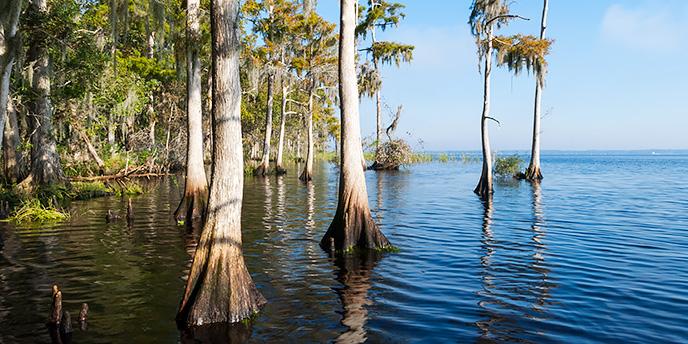
6 May 2024 • Florida Water Resources Journal
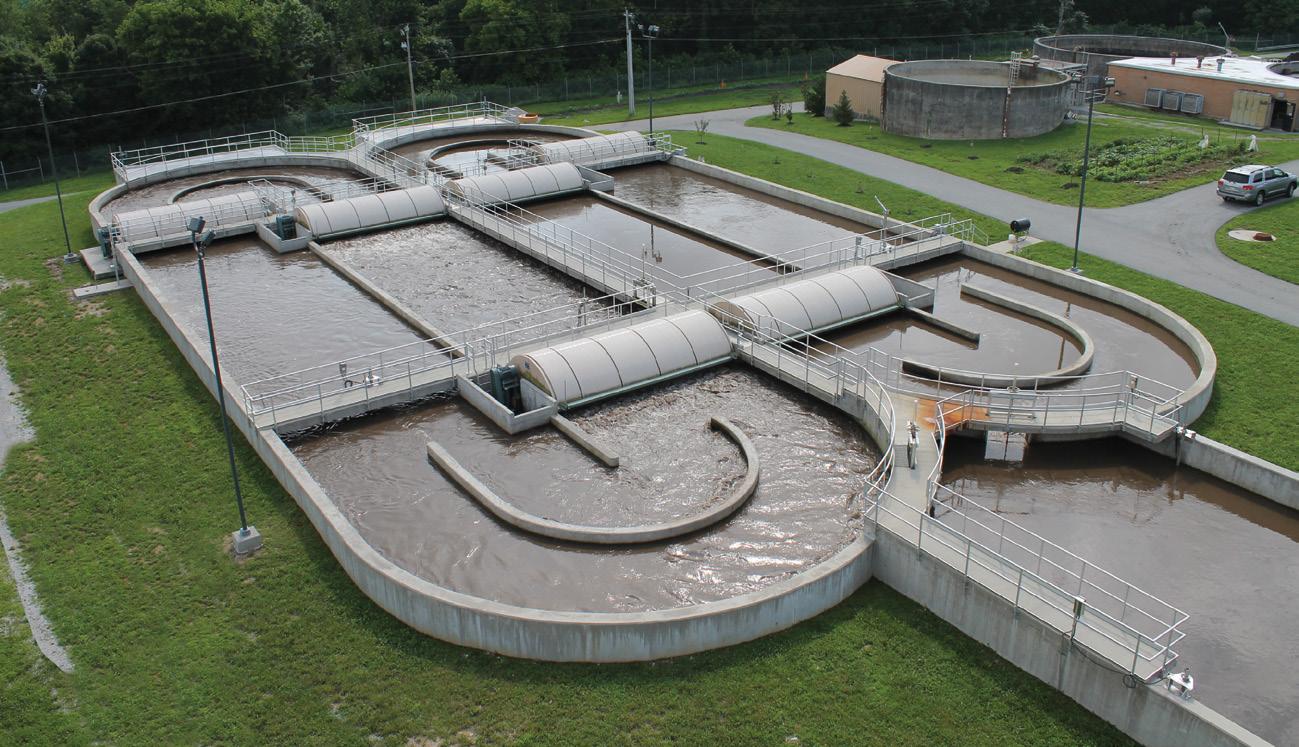
IS ONLY ONE ADVANTAGE OF OUR CLOSED LOOP REACTOR PROCESS.
We have more than 60 years of experience in oxidation ditch technology and more than 2000 installations. Lakeside’s CLR process offers a variety of wastewater treatment options, including several operational modes, nitrogen and phosphorus removal, and an adaptable configuration, providing maximum flexibility with consistently high quality effluent. The CLR process is simple to operate and can be configured in several shapes, including the conventional racetrack, folded U-shape or concentric multichannel designs. Lakeside’s staff delivers full service from initial concept through construction to plant operation. The result: reliable results with minimal operator attention and maintenance. When performance counts, count on the industry leader for more than 90 years!
Speak to one of our experts at 630.837.5640, email us at sales@lakeside-equipment.com, or visit www.lakeside-equipment.com for more product information. REPRESENTED LOCALLY BY:




Cleaner Water for a Brighter Future®

CLR Process Components Magna Rotors Velocity Control Baffles Rotor Covers Level Control Weirs E.A. Aerotor Process Monitoring and Control Systems FLEXIBILITY
Florida
Trippensee
FL www.TrippenseeShaw.com T:
All trademarks owned by Lakeside Equipment Corporation. © 2024 Lakeside Equipment Corporation.
Panhandle Only T: 205.424.7570 www.eshelmancompany.com
Shaw, Inc. Eustis, Sebring, & Boca Raton,
407.222.0575
Planning for Capital Investments With Asset Management
Sheryl Parsons
Budgetary pressures often impede capital program expenditures or investments for maintenance and replacement, especially if a multi-year capital plan is not prepared or the impacts of capital projects on the operating budget are not considered. This lack of investment makes it increasingly difficult to sustain assets in a condition necessary to provide expected service levels.
Deferring essential maintenance or asset replacement can reduce the ability to provide services and may threaten public health, safety, and overall quality of life. Also, as the physical condition of assets decline, deferring maintenance and/or replacement may increase long-term costs and liabilities.
Establishing capital planning, budgeting, and reporting practices to encourage adequate capital spending levels ameliorate this problem. The capital plan should address the continuing investment necessary to properly maintain capital assets, including proactive steps to promote adequate investment in capital renewal and replacement and necessary expenditure levels for maintenance. Good capital planning begins with asset management planning.
What is Asset Management?
Asset management is a process water and wastewater utilities can use to ensure that planned maintenance is conducted and capital assets (pumps, motors, pipes, etc.) can be repaired, replaced, or upgraded on time, and that there is enough money to pay for it. Many utilities use asset management to pursue and achieve sustainable infrastructure.
A high-performing asset management program includes detailed asset inventories, operation and maintenance tasks, and longrange financial planning. Asset management is implemented through an asset management program and typically includes a written asset management plan.
Assets are generally large pieces of complicated equipment or infrastructure that can be very expensive. With proper maintenance, these assets can last a long time, so utilities benefit by keeping them in good shape. Infrastructure in the United States
is aging and failing at an alarming rate and the reality is that it’s not all accounted for. It’s important to remember infrastructure is both above ground and underground and to take note of all these assets because they are essential to protect public health and provide for economic development.
Asset management is not difficult. It answers five core questions:
What is the Current State of all Assets?
S What does the utility own?
S Where is it?
S What is its condition?
S What is its useful life?
S What is its value?
Best practices include:
S Preparing an asset inventory and system map
S Developing a condition assessment and rating system
S Assessing remaining useful life by consulting projected-useful-life tables or decay curves
S Determining asset values and replacement costs
What is the Required Sustainable Level of Service?
S What level of service do stakeholders and customers demand?
S What do regulators require?
S What is the actual performance?
S What are the physical capabilities of all assets?
Best practices include:
S Analyzing current and anticipated customer demand and satisfaction with the system
S Understanding current and anticipated regulatory requirements
S Writing and communicating to the public a level of service “agreement” that describes a system’s performance targets
S Using level of service standards to track system performance over time
Which Assets are Critical to Sustained Performance?
S How can assets fail?
Sheryl Parsons is regional funding practice leader with Mead & Hunt in Port Orange.
S How do assets fail?
S What are the probabilities and consequences of asset failure?
S What does it cost to repair the asset?
S What other costs (social, environmental, etc.) are associated with asset failure?
Best practices include:
S Listing assets according to how critical they are to system operations
S Conducting a failure analysis (root cause analysis, failure mode analysis)
S Determining the probability of failure and listing assets by failure type
S Analyzing failure risk and consequences
S Using asset decay curves
S Reviewing and updating the system’s vulnerability assessment
What are the Minimum Life Cycle Costs?
S What alternative strategies exist for managing operation and maintenance, personnel, and capital budget accounts?
S What strategies are the most feasible?
S What are the costs of rehabilitation, repair, and replacement for critical assets?
Best practices include:
S Moving from reactive maintenance to predictive maintenance
S Knowing the costs and benefits of rehabilitation versus replacement
S Looking at life cycle costs, especially for critical assets
S Deploying resources based on asset conditions
S Analyzing the causes of asset failure to develop specific response plans
What is the Best Long-Term Funding Strategy?
S Is there enough funding to maintain assets for the required level of service?
S Is the rate structure sustainable for the system’s long-term needs?
8 May 2024 • Florida Water Resources Journal
FWRJ
page 10
Continued on
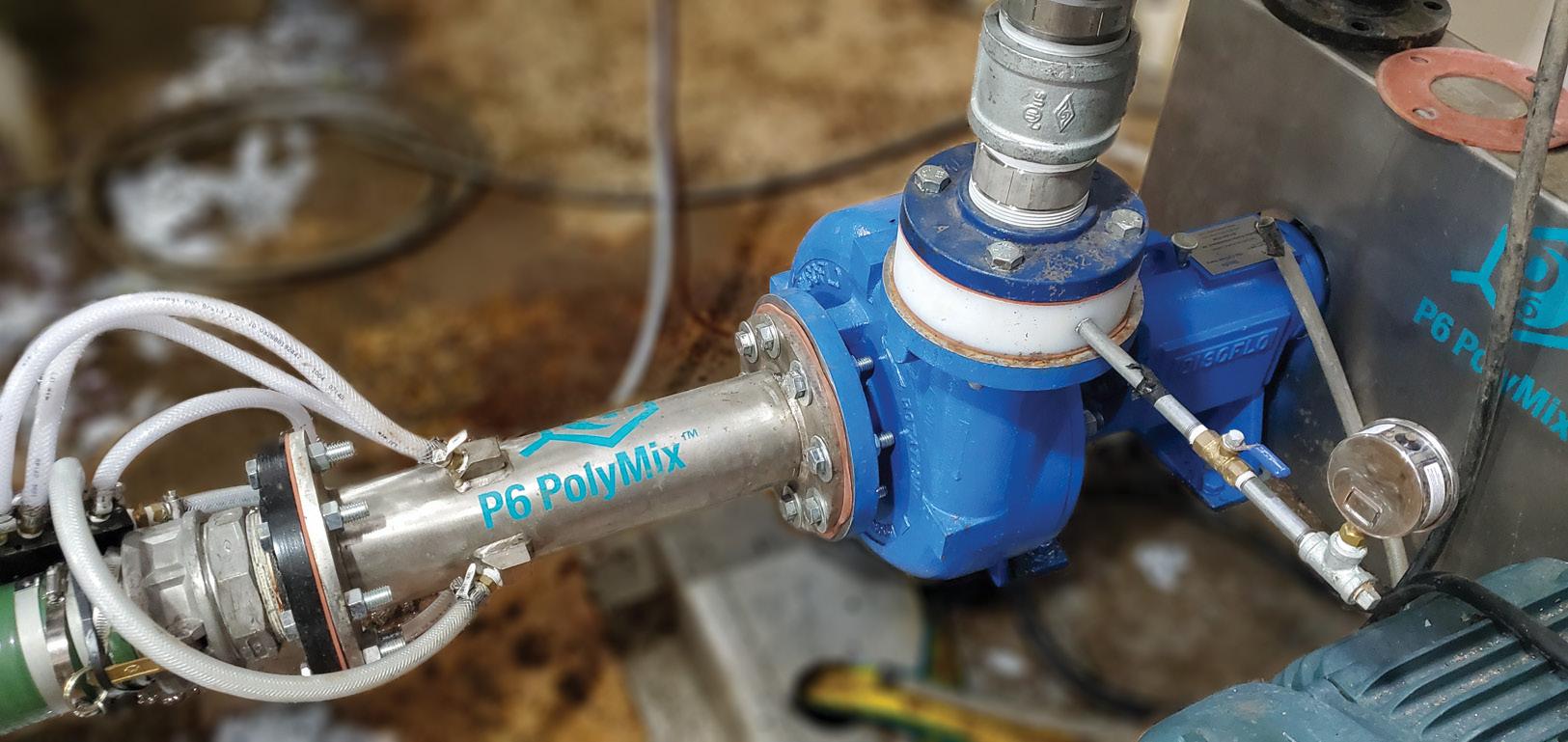


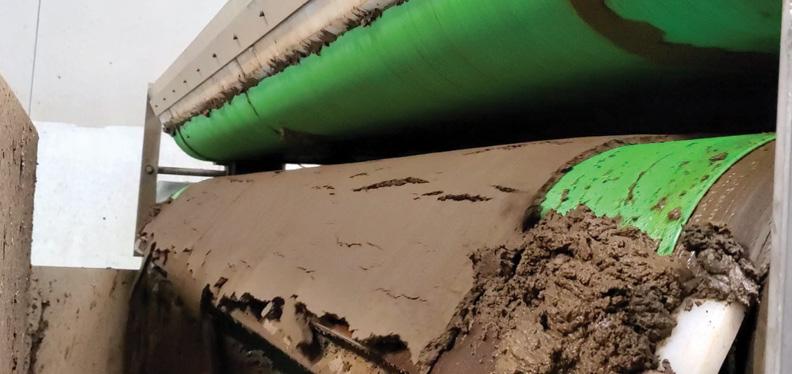
1. POLYMER REDUCTION: P6 PolyMix® Systems reduce polymer consumption by providing complete polymer/sludge mixing in a shear-sensitive manner. This patented mixing process allows long-strand polymer chains to remain intact and unbroken and wastewater floc to remain intact and unsheared. Typical applications result in a 25-50% REDUCTION IN POLYMER CONSUMPTION, thus saving the customer thousands of dollars in polymer expenses. By not breaking up the polymer chains, the dewatering equipment will experience less fouling, providing more reliability and reducing equipment cleaning costs.
2. DRIER CAKE SOLIDS: P6 PolyMix® technology optimizes the polymer and sludge mixing process, allowing INCREASE DEWATERED SOLIDS CONCENTRATION and INCREASED PERCENT SOLIDS CAPTURED. This unique mixing process results in more efficient sludge hauling, allowing customers to transport less water and more dewatered cake off-site.
3. ELIMINATION OF PUMP MAINTENANCE: P6 PolyMix® technology reduces pump parts and maintenance by utilizing the abrasion-resistant Discflo pumping principles of Boundary Layer/Viscous Drag. This principle can save the customer thousands of dollars in parts and maintenance over the lifetime of the equipment. All P6 PolyMix® systems in the municipal market include a 10-YEAR (extendable to 20 years) 100% WET END WEAR WARRANTY, No other pump manufacturer in the industry provides a wear warranty, let alone a 20-year wear warranty!
4. PUMPS & MIXES: P6 PolyMix® technology uses the unique principles of Boundary Layer/Viscous Drag for mixing polymer versus a mixer/check valve; this, paired with its unique InjeX™ polymer injection mixing chamber, is designed for MINIMAL POLYMER DEGRIDATION, allowing for maximum polymer savings. The hydraulic shear forces within the mixing pump provide a complete homogeneous wastewater polymer slurry fed to the dewatering equipment without breaking the long chain polymers or reducing floc size.
5. LOWER OPERATING PRESSURE AND INSTALLED HORESPOWER: P6 PolyMix® technology dramatically reduces the operating pressure by reducing back pressure within the piping system due to eliminating mixer/check valves. In some applications, customers have had a 75% REDUCTION IN PRESSURE Lower pressure allows the feed pump to operate at lower horsepower. HORSEPOWER SAVINGS OF UP TO 50% OR MORE are possible by installing a P6 PolyMix® system. Customers can see substantial long-term energy savings and reduced upfront capital costs associated with lower installed horsepower.
6. HOW IS IT APPLIED: P6 PolyMix® systems entirely replace bulky, expensive, outdated traditional sludge feed pumps. You can now replace thousands of dollars in equipment and regain valuable real estate space by switching to P6 PolyMix® and utilizing its unique compact design, patented process for eliminating mixer/check valves, and ultra-efficient polymer mixing process. Contact us to learn how P6 PolyMix® can revolutionize the efficiency of your BELT FILTER PRESSES, GRAVITY BELT THICKENERS, ROTARY THICKENERS, SCREW PRESSES, AND CRENTIFUGES.
GOT
WANT TO SAVE MONEY ON POLYMER? Gerber Pumps Int’l Inc. Phone: 407 834 9104 Email: sales@gerberpumps.com 2100 N. Ronald Reagan Blvd. Suite 1056 Longwood FL 32750 PATENTED P6 PolyMix® UP TO A 25-50% REDUCTION IN POLYMER CONSUMPTION!
SLUDGE?
Some strategies to consider:
S Revising the rate structure
S Funding a dedicated reserve from current revenues (i.e., creating an asset annuity)
S Financing asset rehabilitation, repair, and replacement through loans or grants
Asset Management Plans
Asset management plans are relatively straightforward. The minimum plan will include:
S Introduction and overview
S Service levels
S Future demand
S Life cycle management and financial considerations
S Asset management practices
S Improvement and monitoring
There are many benefits to asset management:
S Prolonged asset life and improved decisions about asset rehabilitation, repair, and replacement
S Setting rates based on sound operational and financial planning
S Budgeting focused on critical activities for sustained performance
S Meeting service expectations and regulatory requirements
S Improving responses to emergencies
S Improving the security and safety of assets
S Reducing overall costs for both operations and capital expenditures
Asset management is the bedrock for a good capital improvement plan (CIP), which contains all the individual capital projects,
equipment purchases, and major studies for a local government, in conjunction with construction and completion schedules and in consort with financing plans. A good CIP will use the asset management plan to identify and prioritize capital projects, as well as set timelines for projects to begin. It will also determine financial policies that identify and dedicate revenue sources to help maintain the expected service levels of capital assets.
Asset Management Funding
Florida has available funding for an asset management plan and the resulting capital projects identified by it. The Florida Clean Water State Revolving Fund (CWSRF) and Drinking Water State Revolving Fund (DWSRF) programs include incentives for asset management plans, as well as capital projects.
The SRFs are funded through money received from federal grants and state contributions. These funds then revolve through the repayment of previous loans and interest earned. While these programs offer loans, principal forgiveness loans (grantlike funding) are also available for qualified small, disadvantaged communities. Principal forgiveness reduces the amount owed on loans by the percentage that the community qualifies. Projects are considered for funding at meetings held each August, November, February, and May, depending on funding availability, and the initial paperwork to be considered must be submitted 45 days in advance of those meetings The details and paperwork are available at the following links:
S www.epa.gov/dwcapacity/about-assetmanagement

S www.fhwa.dot.gov/asset/guidance.cfm
S www.floridadep.gov/WRA/SRF
The CWSRF is Florida’s largest financial assistance program for water infrastructure, providing low-interest loans to local governments to plan, design, and build or upgrade wastewater, stormwater, and nonpoint source pollution prevention projects. Certain agricultural best management practices may also qualify for funding. The loan terms include a 20-year amortization and lowinterest rates. Having an asset management plan will reduce the interest rate on a loan by 0.1 percent.
Additionally, small community wastewater facility grants are also available for a financially disadvantaged small community (a county, municipality, or special district that has a population of 10,000 or fewer, and a per capita annual income less than the state per capita annual income). These grants are incorporated into and must accompany a CWSRF loan and are, therefore, linked to the CWSRF program.
To qualify for principal forgiveness or grant funding in Florida’s CWSRF, an asset management plan is required. The plan does not need to be in place at the time of loan execution, but must be completed three months before the loan is closed. The CWSRF has a contractor that can assist with the asset management plan at no charge, if necessary.
Florida’s DWSRF provides low-interest loans to local governments and certain private utilities to plan, design, and build or upgrade drinking water systems. Discounted assistance for small communities may be available; principal forgiveness may also be available for disadvantaged communities. The loan terms include a 20-year amortization and lowinterest rates. Having an asset management plan will reduce the interest rate on a loan by 0.1 percent.
An asset management plan is not required for principal forgiveness in Florida’s DWSRF, but it’s encouraged. For small, disadvantaged systems, the DWSRF has a contractor that can prepare the plan for free.
An Asset Itself
An asset management plan is a true asset itself for all aspects of a water utility, including capital budgeting and CIPs. It can improve service, minimize costs and down time, and provide a road map for funding projects. It can even earn a break on interest rates for loans. S
10 May 2024 • Florida Water Resources Journal
Continued from page 8
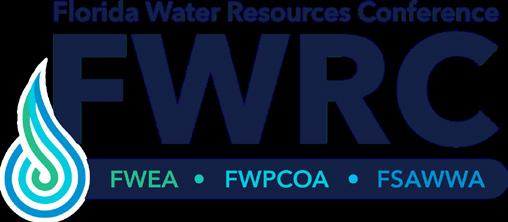
for attending, sponsoring, speaking, exhibiting, volunteering and more at the 2024 Conference! See you in West Palm Beach in 2025.
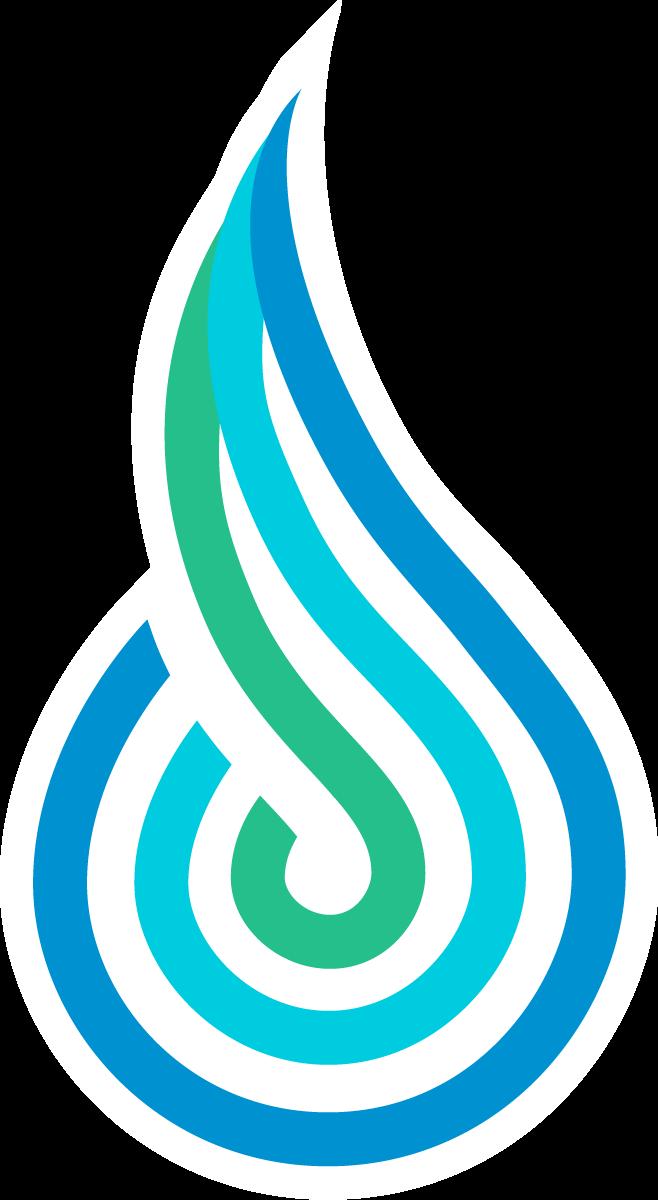
Florida Water Resources Journal • May 2024
www.fwrc.org Thank You
City of Ocoee Goes Green and Addresses Water Issues With New Park
 IAthena Tipaldos President, FWPCOA
IAthena Tipaldos President, FWPCOA
met Hseth Burch, MS, EI, CFM, who is a staff engineer at the City of Ocoee, at a recent conference where he gave a presentation on the city's new Unity Park, which helps to treat stormwater and improve water quality.
I, along with some of my coworkers, made a field trip to visit the park. The City of Orlando public works team shared some great information about how it hopes to help build a better tomorrow with green infrastructures. I requested further details regarding the origins of Unity Park and how the city conceptualized its creation. The following information was provided by Ginger Corless, the City of Ocoee’s deputy development service director/community redevelopment agency administrator.
Key to the revitalization of Ocoee’s
stormwater facility by collecting stormwater from small lots, allowing higher lot coverage and thus promoting higher intensity and densities needed to reestablish a thriving downtown. The 5-acre park is a great example of how green infrastructure can be planned and built to not only treat stormwater, but also serve as a sustainable urban open space.
The park is beautifully landscaped, with nearly 15,000 plants. It’s a place where people come together for many events, like our recent “Spring into Conservation,” which was held March 9, or to safely stroll along a quarter-mile promenade and boardwalk or meditate under a shelter located on an overlook pier, replenishing their mental and physical wellbeing. A pristine urban plaza was built using a series of terraces to address slope. Decomposed granite areas are integrated among the terraces creating seat walls. Soon, the 1920 African American Memorial will sit among these terraces.
Downtown Ocoee is in the closed basin system of Starke Lake. To provide the community with flood resiliency, the city has elevated standards for development in a closed basin, such as ensuring postdevelopment stormwater discharge does not exceed predevelopment flows up to and including a 100-year 24-hour storm event. Based on information gained through various analyses,

it was determined the treatment facility needed to provide for 41.7 downtown acres and an additional 165 acres draining to the creek that passes through downtown. To meet local and state requirements, we found the treatment volume needed to be about 10.5 acre feet.
Today, the park meets and exceeds this requirement and can treat 12.6 acre feet (4.1 million gallons) of stormwater. Water flows into the park through a series of designed stages of natural biological filtration. These stages represent different habitats from deep water ponds to wooded uplands, and various aquatic ecosystems. The stream was naturalized, removing previous piping and channelization, allowing for a graceful and meandering path along the south side of the park and connecting it to flood plains by encouraging pooling at three strategically placed weirs to promote settling of large particulate matter, such as dirt, dust, and organic matter, like sticks and leaves.
The landscape brings the natural ecosystem into the urban green space, providing a new habitat for endemic and migratory animals. The landscape also reduces the need for extensive irrigation, minimizing the need for groundwater withdrawal.
The planning, design, and construction of the park were guided by an intercity departmental project team. The team included representatives from parks and recreation, development services, utilities, public works, and the city manager’s office. The project team worked together to build a green infrastructure project that treats stormwater, while also functioning as an urban open space under the management of the parks and recreation department.
We couldn’t, however, have built the project if it weren’t for our local partners.
In 2021, construction costs increased due to supply-chain disruptions caused by COVID. Value engineering allowed the city to keep the project within 11 percent of the original budget. Keeping portions of the work in-house helped minimize costs and keep the project moving. Then, in 2022, Hurricane Ian swept across central Florida. While the city escaped surface flooding, the prolonged high-water table slowed work as more time and effort were required to dewater the site so work could proceed. The material excavated for the wet pond was used by local contractors.
12 May 2024 • Florida Water Resources Journal
C FACTOR
Pictured left to right are Hseth Burch, staff engineer; Milen Womack, city engineer; Athena Tipaldos, FWPCOA president; Steve Krug, director of public works; and Mauricio Ayares, engineering technician.
The use of local and in-house employees allowed for the natural development of community ownership; those who worked on the project live in or near the city and have a vested interest in the success of the park. Not only is the community gaining environmental benefits from the installation of the park, but by using as much local labor and materials as possible, the economy of the community was boosted.
Starke Lake and adjoining waterbodies suffer from algae blooms. The enhanced wetland is designed to remove 4.7 kg of nitrogen and 1.4 kg of phosphorus annually. Divided into three distinct sections (a meandering stream, a vegetated wetland, and a wet pond) the park will provide water quality enhancements for Starke Lake and help increase the city’s flood resiliency.
Embodying the beauty of central Florida, the park’s landscape is 100 percent native plants. By imitating nature, the park provides a peaceful retreat for local wildlife, while requiring less maintenance. The use of native plants is a practice in sustainability by reducing the need for excess watering and fertilization. Dozens of native trees were planted, including Slash Pine, Florida Red Maple, American Sweet Gum, Southern Live Oak (some 10 inches in diameter) and Autumn Gold Bald Cypress. Furthermore, to minimize transportation outputs that contribute to cost and air pollution via vehicular exhaust (and to minimize construction waste) the material excavated for the wet pond was used by local contractors, including the city’s contractor working on the park, as fill. Wood requirements were minimized, and instead, composite boardwalk decking, posts, and piles were used. It’s anticipated that the composite decking and piles will weather better than wood in the central Florida climate, reducing the amount of maintenance and decking replacement.
With development expanding daily in our state, prioritizing water quality is paramount. I am impressed by the City of Ocoee's commitment to this cause through the creation of Unity Park. Its proactive approach to enhancing stormwater retention and improving water quality sets a commendable example. I am excited to watch the park's continued contributions to environmental preservation.
If you would like more information about the City of Ocoee’s public works department, please visit the website at www.ocoee. org/1172/Unity-Park. S






Florida Water Resources Journal • May 2024 13
FWEA CHAPTER CORNER
Welcome to the FWEA Chapter Corner! The Member Relations Committee of the Florida Water EnvironmentvAssociation hosts this article to celebrate the success of recent association chapter activities and inform members of upcoming events. To have information included for your chapter, send details to Melody Gonzalez at gonzalezm@bv.com.

Skeet and Sporting Clays Event Raises Money for Local Scholarships and Nonprofit
Melody Gonzalez
The Manasota Chapter held its first post-COVID sporting clay event on Feb. 1, 2024. Nearly 70 participants from the water sector gathered to enjoy the course at Sarasota Trap to participate in skeet and sporting clays to raise money for the FWEA state scholarship fund and Engineers Without
Borders, which oversees engineering projects that empower communities to meet their basic human needs.
The chapter steering committee worked tirelessly to plan the safe and fun event for its members. Special thanks go to Madeline Kender, Senuda Rajapakse, Kristiana Dragash, and Nicole Cohen for their efforts.
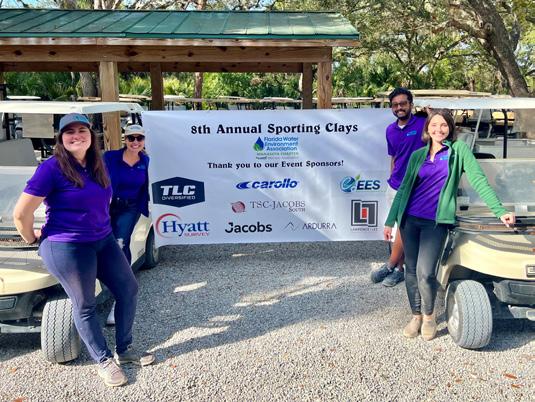
The team is so grateful for the generous sponsorships from the following companies:
S Carollo Engineers
S Ardurra
S Jacobs
S Environmental Equipment Services
S Hyatt Survey
S TSC Jacobs South TLC Diversified

Lawrence Lee Construction
In addition to the involvement of these in credible sponsors, which allowed us to raise al most $5,000, Senuda Rajapakse was able to secure a matching donation from Xylem, bringing our total impact up to a whopping $10,000!
Thank you to everyone who came out to participate in this fun event. We can’t wait to do it again next year—but first, stay tuned as we’re planning a longest drive contest at Evie’s as our summer social and fundraiser in July.
Looking forward to seeing you there!
Melody Gonzalez, E.I., is a project engineer with Black & Veatch. She serves as the FWEA Member




14 May 2024 • Florida Water Resources Journal
Melody Gonzalez
Group photo of the clay shoot participants after conquering the clay course!
The Manasota Chapter Sporting Clays Planning Committee members are (left to right) Nicole Cohen, Kristiana Dragash, Senuda Rajapakse, and Madeline Kender.
Even Scout, the resident Sarasota Trap pup, enjoyed some Chick-fil-A, a cool new shirt, and some extra belly rubs.
IQ SensorNet
Clear Choice.
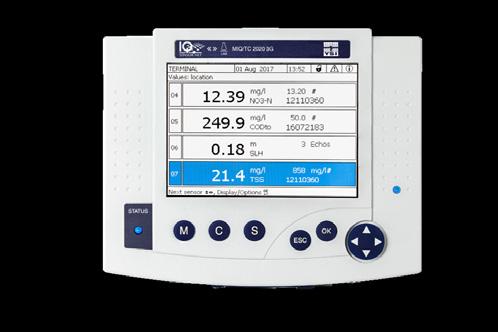

Designed for Flexibility
Measure up to 20 parameters per controller and easily expand your network with a modular, plug-and-play system.
Designed for Process Optimization
Improve process control and increase operational efficiency with accurate, continuous water quality monitoring.
Designed for Cost Savings
Reduce operating costs and save on chemical,
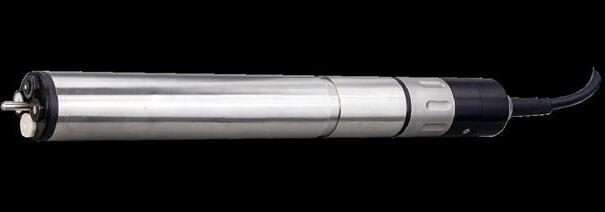






Learn more at YSI.com/IQSN Valrico, FL 33594 813.629.2720 (US) cl2solutions.com Official Distributor
The
Gaming Money to Fund Florida Water Projects
Gov. Ron DeSantis recently signed Senate Bill (SB) 1638, Funding for Environmental Resource Management, which provides $150 million for necessary repairs and upgrades to the central and south Florida water management system. The bill further directs 96 percent of the revenue generated from the Seminole Tribe Compact to fund water quality improvement, infrastructure, and the continued acquisition and management of Florida’s conservation lands. As of February 2024, the revenue share estimates are approximately $750 million per year.
In 2021, Gov. DeSantis struck a historic gaming compact with the Seminole Tribe of Florida to generate for the state an estimated $6 billion through 2030. Prior to this, the state was not receiving any revenue from gaming activities on tribal lands.
“Among Florida’s greatest assets are its natural resources,” said Gov. DeSantis. “This revenue stream will further enhance our efforts to conserve our natural resources, protect our waterways, and make our ecological infrastructure more resilient.”
“In recent years, our state has made unprecedented investments to protect our wild spaces, improve water quality, and preserve our natural resources,” said Shawn Hamilton, secretary of the Florida Department of Environmental Protection (FDEP). “The consistent revenue stream from this legislation will allow the state to double down on its efforts to protect Florida’s natural resources for generations to come.”
Said Dr. Wes Brooks, Florida’s chief resilience officer, “When it comes to enhancing quality of life for Floridians, these supplemental revenues for flood protection infrastructure and the conservation and
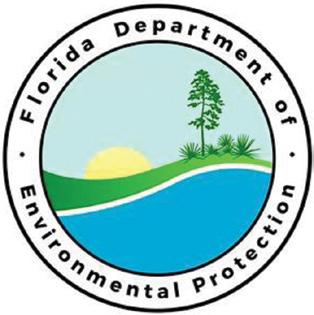
maintenance of our natural and working landscapes leave much less to chance. We will continue to deliver impactful investments that ensure the resilience of our communities and the sustainability of Florida’s natural resources.”
“Investing in our environment, natural resources, and water management infrastructure is vital to maintain our high quality of life in the state of Florida,” said Scott Wagner, vice-chair of the South Florida Water Management District (SFWMD) governing board. “These funds are absolutely critical to achieving that goal. We look forward to a continued partnership as we protect our water resources and conduct our important work.”
The SFWMD will receive $150 million for necessary repairs and upgrades to the central and south Florida water management system and to conduct a study of the health of Lake Okeechobee in conjunction with the Florida Gulf Coast University Water School. The study will be used for future planning of invasive plant control, replanting of native vegetation, and fish and game management.
The SFWMD operates the system, which provides water for more than 9 million Floridians daily and protects parts of the state from potentially dangerous flooding conditions. The water management system also provides water for businesses and communities from Orlando to the Florida Keys.
For Fiscal Year 2024-2025, this legislation appropriates the following distributions of the Seminole Gaming Compact revenues:
S $100 million for land acquisitions within the Florida Wildlife Corridor to create crucial linkages for wildlife habitat.
S $100 million for the management of uplands and the removal of invasive species, which includes:
• $36 million to the Department of Environmental Protection
• $32 million to the Department of Agriculture and Consumer Services
• $32 million to the Florida Fish and Wildlife Conservation Commission
S $100 million for the Resilient Florida Grant Program, which will guard inland and coastal communities against the impacts of storm damage, surges, hurricanes, and flooding.
S $79 million for the Water Quality Improvement Grant Program.
In future years, SB 1638 designates compact revenue as follows:
S The lesser of 26.042 percent or $100 million to support the Florida Wildlife Corridor.
S The lesser of 26.042 percent or $100 million for the management of uplands and the removal of invasive species, which is divided as follows:
• The lesser of 36 percent or $36 million to FDEP, which includes:
• The lesser of 88.889 percent or $32 million for state park and land management services.
• The lesser of 11.111 percent or $4 million for implementation of the local Trail Management Grant Program.
• The lesser of 32 percent or $32 million to the Department of Agriculture and Consumer Services for land management activities.
• The lesser of 32 percent or $32 million to the Fish and Wildlife Conservation Commission for land management activities.
S The lesser of 26.042 percent or $100 million to FDEP to the Resilient Florida Trust Fund.
S The remainder to FDEP and the Water Protection and Sustainability Program Trust Fund.
Based on estimates, the compact revenues could provide approximately $450 million in future years for this program. S
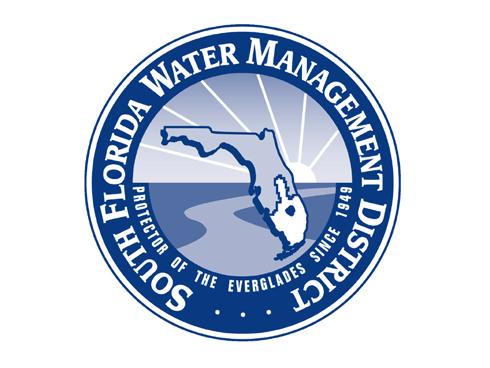
16 May 2024 • Florida Water Resources Journal
Operators: Take the CEU Challenge!
Members of the Florida Water and Pollution Control Operators Association (FWPCOA) may earn continuing education units through the CEU Challenge! Answer the questions published on this page, based on the technical articles in this month’s issue. Circle the letter of each correct answer. There is only one correct answer to each question! Answer 80 percent of the questions on any article correctly to earn 0.1 CEU for your license. Retests are available. This month’s editorial theme is Operations and Utilities Management. Look above each set of questions to see if it is for water operators (DW), distribution system operators (DS), or wastewater operators (WW). Mail the completed page (or a photocopy) to: Florida Environmental Professionals Training, P.O. Box 33119, Palm Beach Gardens, Fla. 33420-3119, or scan and email a copy to memfwpcoa@gmail.com. Enclose $15 for each set of questions you choose to answer (make checks payable to FWPCOA). You MUST be an FWPCOA member before you can submit your answers!
EARN CEUS BY ANSWERING QUESTIONS FROM PREVIOUS JOURNAL ISSUES!
Contact FWPCOA at membership@fwpcoa.org or at 561-840-0340. Articles from past issues can be viewed on the Journal website, www.fwrj.com.
Planning for Capital Investments With Asset Management
1. What is the primary consequence of deferring essential maintenance or asset replacement?
a. Reduced long-term costs
b. Increased public health and safety risks
c. Improved overall quality of life
d. Enhanced capital spending levels
2. What does a high-performing asset management program include?
a. Detailed asset inventories
b. Capital renewal and replacement
c. Long-range financial planning
d. All of the above
3. Which assets are critical to sustained performance?
a. Assets that are expensive
b. Assets with high maintenance costs
c. Assets that are essential for system operations
d. Assets with a long useful life
4. What are minimum life cycle costs?
a. Costs associated with asset failure
b. Costs of rehabilitation, repair, and replacement
c. Costs of personnel and capital budget accounts
d. Costs of environmental impact
5. What are the benefits of asset management?
a. Reducing overall costs for operations and capital expenditures
b. Improving responses to emergencies
c. Setting rates based on sound planning
d. All of the above
Effective Utility Management: A Primer for Water and Wastewater Utilities
Florida Department of Environmental Protection (Article 2: CEU = 0.1 DW/DS/WW02015435)
1. Which measures encourage active assessment of practices in place?
a. Quantitative measures b. Qualitative measures
c. Benchmarking measures d. None of the above
2. What does the “operational optimization” attribute focus on?
a Collecting customer payments
b. Minimizing resource use and loss
c. Diversifying revenues
d Maintaining bond rating agency support
3. What are the primary components of the primer for effective utility management?
a Five keys to workplace culture
b Ten attribute areas
c. Utility size and budget
d Common sense assessment
4. Why is updating standard operating procedures important for knowledge management?
a To respond effectively to knowledge loss due to employee turnover
b To integrate new and evolving technologies
c. To improve business systems data utilization
d To enhance human resource management
5. What is the purpose of the “product quality” attribute?
a. To provide reliable, responsive, and affordable services
b To produce water and other recovered resources that meet regulatory requirements
c. To engage stakeholders in decision making
d. To understand customer needs
Florida Water Resources Journal • May 2024 17
SUBSCRIBER NAME (please print) Article 1 LICENSE NUMBER for Which CEUs Should Be Awarded Article 2 LICENSE NUMBER for Which CEUs Should Be Awarded Credit Card Number ___________________________________ CVV Number Expiration Date
Sheryl Parsons (Article 1: CEU = 0.1 DW/DS/WW02015434)
No Operator, No Water: Operations and Utilities Management
 Marjorie G. Craig, P.E. Chair, FSAWWA
Marjorie G. Craig, P.E. Chair, FSAWWA
Operations
“No Operator, No Water.” I love this slogan of the American Water Works Association (AWWA) and the shirt I own that says it; this refrain encapsulates the essence of our industry’s reliance on skilled professionals. There are many other great slogans in AWWA that go along with having no water available to make things or do
things, such as Florida Section’s “No Water, No Oranges,” and others, like “No Water, No Wine,” or the slogan of the Kentucky/Tennessee Section of AWWA, “No Water, No Bourbon.”

We cannot underestimate the significance of drinking water and the contributions of water professionals in our lives, and the potential impact on our society of having no operators available (or not enough) to treat or distribute drinking water. Can you imagine a day without water? Many places in the world do not have reliable sources of drinking water. Our industry’s human resources are critical to producing and distributing drinking water and our operators are the most important resource and “operational tool” we have in our toolbox.
It is imperative that we ensure enough operators, electricians, mechanics, engineers, scientists, accountants, communicators, and all other related professionals are entering the water field. There are many Florida initiatives


that are leading the way, such as the high school academies, veterans initiatives, poster contests, the many young professional (YP) activities, and the FSAWWA communication enhancement initiative.
Utilities Management
Who Inspired or Inspires You in Your Career?
There are many people who inspired me earlier in my career; whether they were in leadership roles or did not hold specific leadership positions, they had great personal influence within the organization. If you’ve read any of my columns, you already know that Dave Tippin inspired me in my career, and there are many others, including Bill Johnson, former utilities director for the City of St. Petersburg; Bill Beasley, now Polk County Board of County Commissioners county administrator; Tim Brodeur, AECOM; and many at the South Florida Water Management District. Their leadership, dedication, drive to get things done, and passion for the industry and the environment is not just something to which I aspire—it’s a testament to the transformative power of leaders in our industry. If you get the opportunity, let the people who have inspired you know they’ve made a difference in your life
What Leadership Qualities Do You and Your Team Admire and Strive For?
In February, we had a departmental meeting, and I asked what leadership qualities my team most admired. They named the usual ones, like integrity, trustworthiness, fairness, empathy, directness (I have gotten that one down!), engagement, etc., but they also said “fun.” Fun! I like that one. There is no reason why we can’t have fun, too, despite everything—or in spite of everything! It can increase motivation and foster a positive working environment. For most of my career, I have blown that one often, forgetting to have fun while working hard and neglecting to celebrate successes. I’m working on these two items for sure, among other self-improvement and self-awareness projects.
Who Inspired You to Volunteer?
My mother was my greatest inspiration in volunteering. She was a “candy striper” when she was young. I don’t think they have those anymore, but they volunteered at hospitals. Later, as I was growing up as a military brat, she
18 May 2024 • Florida Water Resources Journal
FSAWWA SPEAKING OUT
FSAWWA board of directors at the Florida Water Resources Conference.
Participants in the signature cornhole competition at the FSAWWA Showcase in the exhibit hall at the 2024 Florida Water Resources Conference.
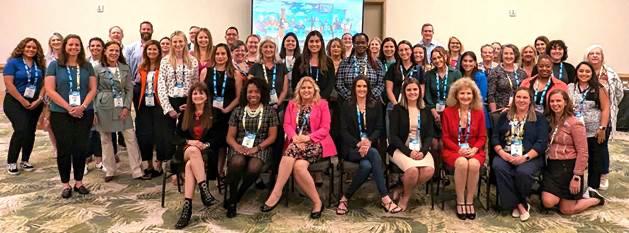


mostly volunteered for organizations related to the military, including the military hospital, and helping mothers having a hard time while their husbands were deployed. We had many children stay with us while their moms were adjusting.
Both of my mothers-in-law (one at a time) have also been utterly selfless in helping others.
In the water industry, my source of inspiration has been many people you probably know already, like the current FSAWWA Executive Committee and board.
We have so many outstanding volunteers— where do I begin?
Who Lifts You Up in Your Organization (as a Worker or Volunteer) and in Your Life?
If you don’t have someone who lifts you up, find at least one person. I heard on the news that one of the keys to longevity attributed to people who live in the “blue zones,” which is a nonscientific term given to geographic regions that are home to some of the world’s oldest people, is to have three people in your life with whom you can laugh and who lift you up.
Over the years, I’ve heard many stories

about the therapeutic effects of laughter in our lives and the importance of people who lift you up. My starter husband had cancer and one of the books he read spoke of the importance of humor in healing. My current husband continues to make me laugh. Every. Single. Day. More than once.
Megan Nelson of Orange County Utilities lifts me up and helps me feel good about being me, as well as giving me a different perspective in life (and yoga advice!). There are others who also make me laugh and lift me up—you know who you are. You all mean the world to me!
Continued on page 20
Florida Water Resources Journal • May 2024 19
The panelists and moderators (seated in front) and attendees at the Women of Water session at the Florida Water Resources Conference.
Some participants in the FSAWWA/FWEA joint fundraiser, “Walk a Mile in Her Shoes,” held March 2024 in Region III in Orlando.
From left to right are Andrea Netcher, moderator/facilitator, and panelists Hillary Weber, Toho Water Authority; Megan Nelson, Orange County Utilities; and Luz Aviles, Orlando Utilities Commission, at the
Attendees at the FSAWWA media training session held by HDR in Orlando.



Continued from page
This is another self-improvement project I’m working on: to remember to lift others up and not get too trapped in working all the time. I’m still working on not being a workaholic (sigh).
Grow Your Water Family, Laugh, and Lift Others Up
I have included a few photos here from past events, including:
S Region III “Walk a Mile in Her Shoes” fundraiser, a joint FSAWWA/FWEA event held in March.
S FSAWWA media training by HDR in Orlando in March. This is the first of several
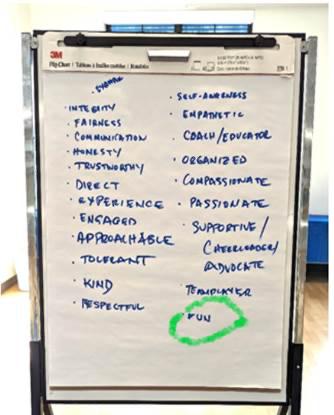
training was very interactive. If you get the opportunity, clear your schedule and fully engage in this.
S The FSAWWA board of governors miniStandard Practice Manual Workshop and the Women of Water Forum (sponsored by Vaughan Pumps), which includes the panelists, facilitators, and attendees.
S FSAWWA attendees at the annual AWWA Water Matters! Fly-in in Washington, D.C., getting ready to visit with legislators, with the side benefit of a beautiful total solar eclipse! Eddy the AWWA water drop was excited to make the journey with us.
Don’t miss these FSAWWA events listed

org. You can register, pay, and export the event to your calendar.
S “Water Bugs” lunchtime learning webinar – May 1
S Manufacturers/Associates Council (MAC) Utility Training Symposium in Orlando –May 2
S Region XI Best Tasting Drinking Water Contest – May 16
S Region IV 6th annual inshore fishing tournament – May 17
S Region III Wine for Water in Orlando –July 25
If you attend any of these (and other) FSAWWA events please send me photos for this column—we love to share! S
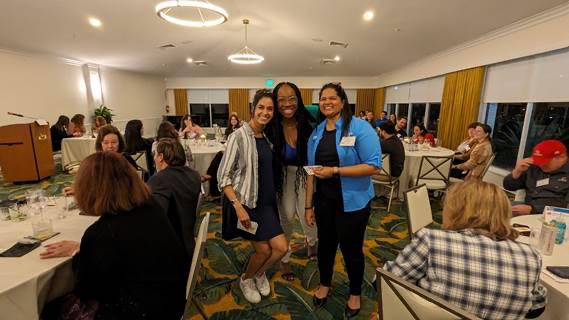
 Marjorie Craig (left), with Village of Tequesta, and Shea Dunifon, with JEA, at the HDR media training session.
Eddy the AWWA water drop on the way to the AWWA Water Matters! Fly-In in Washington, D.C.
FSAWWA members attending the AWWA Water Matters! Fly-In in Washington, D.C., getting ready to take a break to view the total solar eclipse on April 8.
Solar eclipse over Washington, D.C., on April 8. (photo: Marjorie Guillory Craig)
List of qualities admired in a leader by the Village of Tequesta Utilities Department.
Jessica Green (center), with Orange County Utilities, give awards to the raffle winners at the “Walk a Mile in Her Shoes” event.
19
Marjorie Craig (left), with Village of Tequesta, and Shea Dunifon, with JEA, at the HDR media training session.
Eddy the AWWA water drop on the way to the AWWA Water Matters! Fly-In in Washington, D.C.
FSAWWA members attending the AWWA Water Matters! Fly-In in Washington, D.C., getting ready to take a break to view the total solar eclipse on April 8.
Solar eclipse over Washington, D.C., on April 8. (photo: Marjorie Guillory Craig)
List of qualities admired in a leader by the Village of Tequesta Utilities Department.
Jessica Green (center), with Orange County Utilities, give awards to the raffle winners at the “Walk a Mile in Her Shoes” event.
19

Digital Transformation in the Water Industry
The aging water and wastewater utility infrastructure in the United States is gaining notable attention. Multiple factors, such as changes in work since the COVID-19 pandemic, an aging workforce, and natural disasters occurring more often, point to the need for utilities to transition to digital workflows. Many utilities, especially smaller or rural ones, are still reliant on paper utility maps and field operation workflows.
These paper-based workflows often result in inefficiencies due to:
S Lack of access to paper maps
S Weathered/aged paper
S Redundant data entry processes
S Illegible handwriting
S Inability to meet regulatory requirements with accurate data entry
Additionally, the older workforce has been accustomed to relying solely on paper workflows and can be resistant to digital workflows. This reliance on paper maps and workflows makes it more difficult to overcome industry challenges and is costlier to operate, thus the need for digital transformation. The benefits of this
transformation are well-known, such as reducing operations costs and providing a better system of records. This results in smarter asset management decisions, attaining better regulatory compliance, and having more satisfied customers.
Geographical Information Systems Bridge the Transition From Paper to Digital Mapping
A geographic information system (GIS), in its simplest form, is a tool that incorporates geographical features with tabular data in order to map, analyze, and collaborate the data. The pivotal piece of this technology is geography—meaning that the data is spatial.
“Spatial” is defined as occupying a physical space on earth. Spatial data is usually accompanied by tabular data, known as attribute data. “Attribute data” is defined as additional information about a spatial feature. An example of this would be a water valve. The actual location of the water valve is the spatial data. Additional data, such as the valve manufacturer, type of valve, the date the
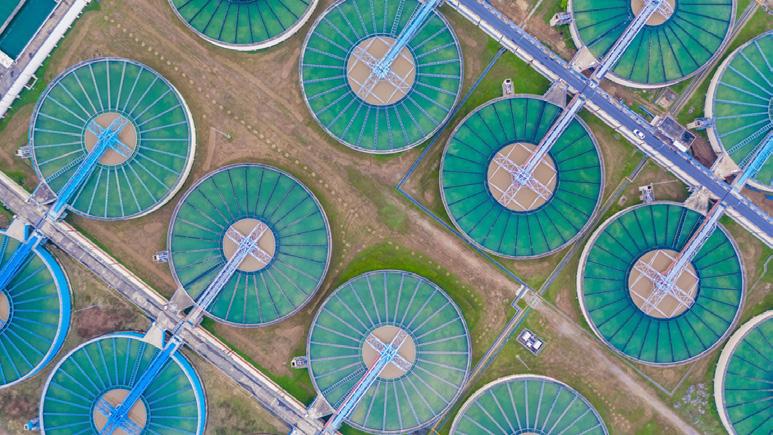



valve was installed, and the number of turns to open would make up the attribute data.
It’s the partnership of these two data types that enables GIS to be such an effective tool through spatial analysis. To obtain the spatial location of the water valve, global positioning system technology is used in conjunction with GIS software.
The benefits to utilities using GIS are numerous:
S Knowing where infrastructure components are located
S Providing a baseline for asset management
S Improved records management
S Increased operational efficiency among the workforce with data access available 24 hours a day, seven days a week in a secure cloud-based solution
S Improved proactive operations through efficient digital field operations and work order management procedures
S Decreased reactive operations
S Increased emergency preparedness and response
S Meeting regulatory compliance reporting
S Transparency to the community
S Theft reduction by more optimized water loss capability
The process can seem overwhelming, especially for a rural community. There are stages in which digital transformation can be modeled once a utility decides to make the transition.
The Smart Water Network Forum (SWAN), a global nonprofit organization focused on advancing digital transformation in the water and wastewater industry, touts the following benefits of digital transformation for water utilities.
Data is Translated Into Actionable Information
The evolution of water meters, in relation


to their data collection capabilities and communication systems, has led to unprecedented streams of information, which utility managers can use to proactively make critical decisions. Currently, utilities only thoroughly analyze, on average, about 10 percent of the data they collect.
When correctly used, automated meter infrastructure can help utilities take their digital transformation to the next level. Data collection is just the first step. For it to be useful, large data streams must be translated into actionable information via powerful analytical engines, allowing end users to rapidly understand and act. This means that utilities should move from a datasiloed organization to a data-centric one, having full transparency and interoperability.
Data means nothing if it can’t be turned into information.
Managers Can Make Better Decisions for a Resilient Future
As consumer behaviors evolve and climate change accelerates, there is a growing need for long-term planning to drive business decisions, but also for making accurate short-term decisions. Water and wastewater utilities must build resilience by identifying potential impacts and developing adaptation plans. To build a sustainable water future it’s necessary not only
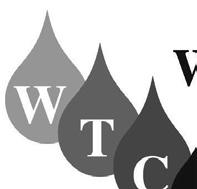

to have the adequate infrastructure, but also to control in advance what’s going to happen and why.
Utilities Can Move Toward a Customer-Centric Approach
Thanks to technological innovations related to water meters, utilities can now become proactive in customer management. The internet has enabled the transformation of many companies and provides enhanced details of client information which, when used properly, provides added value services to customers, reduces complaints, and can support industrial customers to optimize the use of water intake in their processes.
The benefits of digital transformation involve higher transparency with citizens, companies, and institutions, thus becoming key agents for a resource that is becoming increasingly scarce, and for which their direct involvement is required.
Digital Transformation Increases Return on Investment
The digitalization of water resource management means savings at both the operational and investment levels. By automating previously manual processes, a smart water
approach in organizations generates greater efficiencies at a lower cost. Any water utility, regardless of its phase in digital transformation, can see increases in return on investment from past investments and make the most of existing technology structures by implementing technological solutions to build a digital structure. The savings achieved can also be the basis for further investments in digitalization, thus making this process sustainable.
The Digital Future
Moving toward digital transformation is an investment in America’s aging water and wastewater infrastructure and provides an opportunity for communities to maintain sustainability and continually provide safe drinking water.
More open and adaptable digitalization in water utilities will provide adequate, standardsbased visibility and control in this new digital era, enabling automated water management by enhancing data with digital elements. This new reality will significantly boost productivity and enable the swift adoption of new technologies to help utilities stay current and build more adaptable, collaborative, and flexible company processes. S






Florida Water Resources Journal • May 2024 23
Factory Trained Technicians - Emergency Repair Services - PM Service/Plans Gas Feed Systems Dry Chemical Feed Systems Peristaltic Pumps Fiberglass Enclosures Metering Pump Skids Tablet Feeders Analyzers Scale Systems Serving the Southeast since 1976 800–826-7699 watertc@watertc.com watertc.com
TECHNOLOGY SPOTLIGHT
Fortifying Florida’s Public Sector Critical Infrastructure: A Call to Action for Water Resources Professionals
As Floridians, we’ve weathered countless storms, both natural and manmade. Yet, in today’s digital age, our vulnerabilities extend beyond the physical realm to the digital landscape. As our state’s public infrastructure becomes increasingly reliant on automation and smart technologies, it has also become more vulnerable to cyberattacks. Cyber threats now pose a significant risk to our critical infrastructure, including water treatment plants, seaports, and public utilities, which are essential for the functioning of our communities.
Recognizing the Urgency for Action
The latest surge in cyberattacks across the United States, as highlighted by incidents in major cities like Atlanta and New Orleans, underscores the pressing need for enhanced cybersecurity measures. Recognizing this urgency, Florida legislators have taken steps to address these threats through the passage of House Bill (HB) 473 and Senate Bill (SB)/HB 275, focusing on cybersecurity incident standards and criminal penalties for tampering with critical infrastructure.
The recent testimony of FBI Director Christopher Wray to Congress emphasizes the gravity of the situation, stressing the vulnerability of U.S. critical infrastructure to cyber physical threats. This reality necessitates a united effort at all levels of government to fortify our defenses and protect our communities from harm.
Bridging the Operational Technology Cybersecurity Skills Gap
One critical aspect of this effort is ensuring that our workforce is equipped with the necessary skills to identify, prepare
for, and mitigate cyber threats; however, as highlighted by the 2023 report, “National Cyber Workforce and Education Strategy,” a significant gap exists in digital skills among American workers. Over 90 percent of jobs require digital skills, yet nearly 30 percent of U.S. workers lack those very skills.
This gap is particularly concerning in the operational technology (OT) sector, where specialized cybersecurity expertise is essential. In the OT workforce, it is estimated that less than one percent have the skills necessary to respond to a cyberattack. This skills gap poses a significant challenge, particularly for Florida’s public sector, where agencies are often understaffed yet responsible for managing some of the most critical infrastructure and operations in the U.S.
The 2024 Florida Cybersecurity Initiative
Fortunately, Florida is taking proactive steps to address this challenge through the 2024 Florida Cybersecurity Initiative. Spearheaded by Automation Strategy & Performance (ASP) this initiative aims to upskill the state’s critical infrastructure employees and certify them as OT cybersecurity specialists. Through a comprehensive 12-month program, participants undergo rigorous training in information technology (IT) and OT network security—as well as hands-on practice in simulated environments— preparing them to effectively safeguard our critical infrastructure.
The Unique Value of Operational Technology Cybersecurity Certification
What sets this initiative apart is its focus on accredited certification, ensuring

that workers possess the necessary skills to confront cyber threats head-on. This accredited certification program combines multiple certifications to ensure that workers have the knowledge and skills to recognize threats, assess vulnerabilities, mitigate risk, monitor status, and respond to cyberattacks.
The OT cybersecurity specialist certification gives organizations that protect critical systems the confidence they need to bridge the gap between IT and OT. By investing in this program, Florida is not only strengthening its cybersecurity defenses, it’s also positioning itself as a leader in OT cybersecurity preparedness.
A Call to Action for Public Sector Leaders
The success of this initiative relies on widespread participation from public sector leaders across the state.
The time to act is now: Florida has set a goal to have over 100 public employees enrolled in this new program by June 30, 2024. We urge all Florida water resources professionals—municipal directors, port authority leaders, utility managers, water control operators, and more—to join us in this endeavor.
By investing in cybersecurity education and training, we can fortify our defenses and protect Florida’s public sector critical infrastructure for generations to come. Together, we can work toward a moresecure future for Florida, safeguarding our critical infrastructure from cyber threats and ensuring the continued well-being of our communities.
Learn more about the 2024 Florida Cybersecurity Initiative’s accredited certification program and how your organization can participate at www.aspint.com/floridacybersecurity. S
Technology Spotlight is a paid feature sponsored by the advertisement on the facing page. The Journal and its publisher do not endorse any product that appears in this column. If you would like to have your technology featured, contact Mike Delaney at 352-241-6006 or at mike@fwrj.com.
24 May 2024 • Florida Water Resources Journal
Our country’s critical infrastructure has never been at greater risk for cyber physical attacks.
Yet, less than 1% of our critical infrastructure workforce have essential cyber skills.
Are you 100% confident your organization has bridged the gap between IT and OT?
If you protect critical systems, the OT Cybersecurity Specialist certification gives your organization the confidence you need.
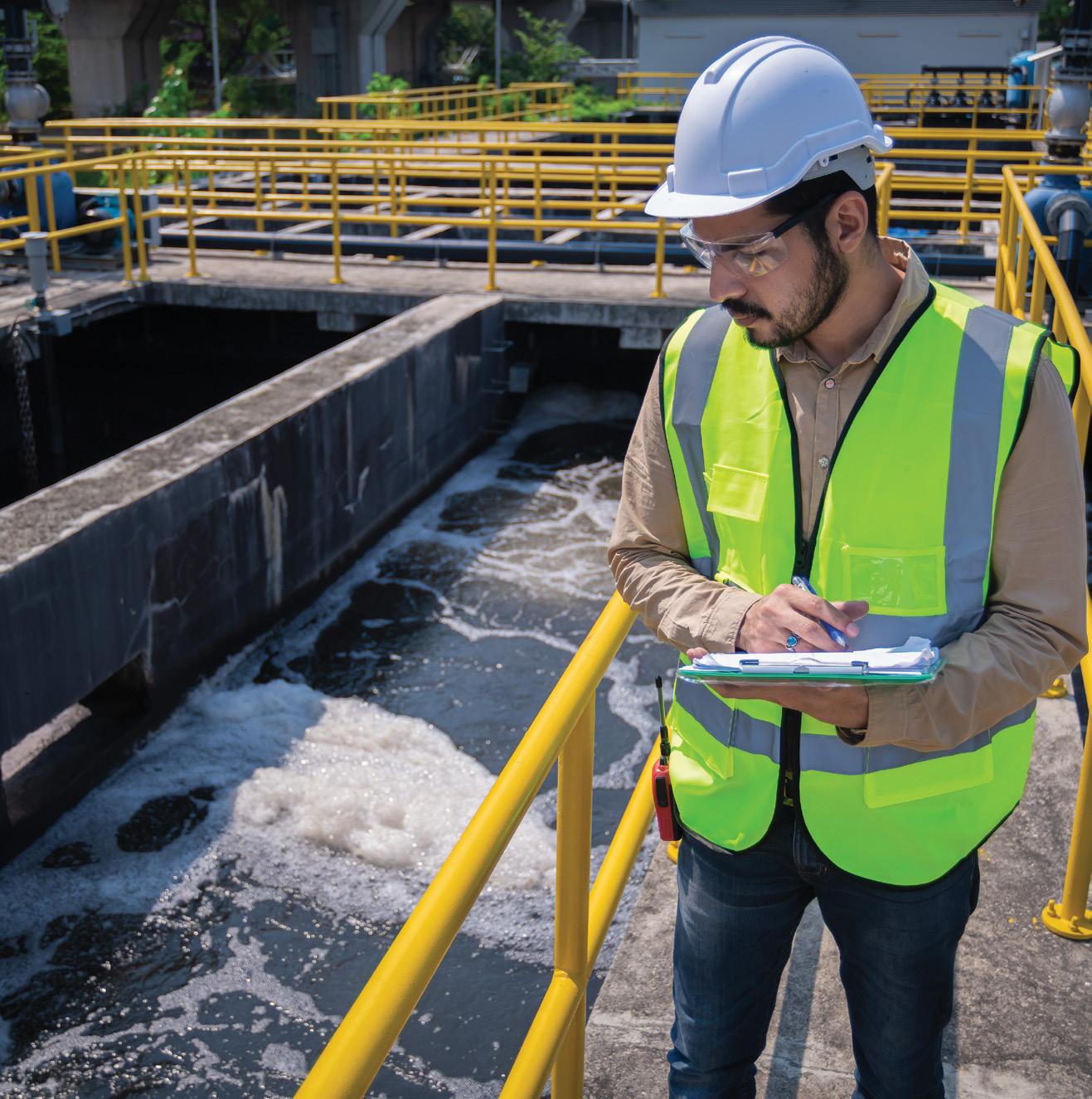
Scan the QR code to learn about the 2024 Florida Cybersecurity Initiative’s accredited certification program and how your organization can participate. www.asp-int.com/floridacybersecurity
Florida Water Resources Journal • May 2024 25
BRIDGE THE GAP IN OT CYBERSECURITY
Effective Utility Management: A Primer for Water and Wastewater Utilities
The document, “Effective Utility Management: A Primer for Water and Wastewater Utilities,” is the foundation of effective utility management (EUM). It’s designed to help water and wastewater utility managers make informed decisions and practical, systematic changes to achieve excellence in utility performance in the face of everyday challenges and long-term needs for a utility and the community it serves. It was produced by utility leaders who are committed to helping other utilities improve water and wastewater management. The primer distills the expertise and experience of these utility leaders into a framework intended to help utilities identify and address their most pressing needs through an incremental and continual improvement management approach.
All water and wastewater utilities can benefit from using this primer. Each utility has unique management opportunities and challenges, and the primer provides a common sense way of assessing, managing, and measuring a utility’s performance to address these opportunities and challenges. The steps described are relevant to any water or wastewater utility, regardless of size, budget, or other capacity.
Cycle of Utility Management
The primer has four primary components that form the basis for a complete cycle of effective and sustainable utility management:
The Ten Attributes of Effectively Managed Water Sector Utilities
These attributes provide a clear set of reference points and are intended to help utilities maintain a balanced focus on all important operational areas, rather than reactively moving from one problem to the next or focusing on the “problem of the day.”
Five Keys to Management Success
These proven approaches help utilities maximize their resources and improve performance. By embedding these five keys into their workplace culture, utilities create a robust foundation for strong, ongoing performance in the ten attribute areas.
Where to Begin: A Self-Assessment Tool
The rigorous and systematic self-assessment tool described helps utility managers and staff evaluate their operations and identify where to begin improvement efforts. By assessing how a utility performs relative to the ten attributes,

comprehensive picture of their organization.
Getting to Work: Implementation of Effective Utility Management
The section on implementation is a central connecting point between the multiple elements of EUM. It focuses on an overall continual improvement cycle and describes how a utility’s self-assessment results can lead into a cycle of planning, implementation of effective practices, measuring performance, and making adjustments over time. It includes the following components:
S A description of the essential components of the EUM cycle
S A guide for measuring performance
S Resources to support EUM implementation
S Steps for creating an improvement plan
The Ten Attributes of Effectively Managed Utilities
The primer is the product of a decadelong partnership between the collaborating organizations and a group of respected water and wastewater utility leaders from across the United States. The primer is a powerful tool for water sector utilities of all sizes, types, and geographies.
The ten attributes provide useful and concise goals for water sector utility managers seeking to improve organizationwide performance. The attributes describe desired outcomes that are applicable to all water and wastewater utilities. They comprise a comprehensive framework related to operations, infrastructure, customer satisfaction, community sustainability, natural resource stewardship, and financial performance. Water and wastewater utilities can use the attributes to select priorities for improvement
based on each organization’s strategic objectives and the needs of the community it serves. The attributes are not presented in a particular order, but rather can be viewed as a set of opportunities for improving utility management and operations. Over time, utilities will be able to deliver increasingly efficient, high-quality service by addressing more, and eventually all, of the attributes.
Product Quality
Produces “fit for purpose” water and other recovered resources (e.g., energy, nutrients, and biosolids) that meet or exceed full compliance with regulatory and reliability requirements and are consistent with customer, public health, ecological, and economic needs.
S Products include treated drinking water, treated wastewater effluent, recycled water, stormwater discharge, and recovered resources.
Customer Satisfaction
Provides reliable, responsive, and affordable services in line with explicit, customer-derived service levels.
S Utilizes a mix of evolving communication technologies to understand and respond to customer needs and expectations, including receiving timely customer feedback and communicating during emergencies.
S Provides tailored customer service and outreach to traditional residential, commercial, and industrial customers, and understands and exercises, as appropriate, the opportunities presented by emergent customer groups (e.g., high-strength waste producers, power companies, etc.).
Continued on page 28

26 May 2024 • Florida Water Resources Journal
Intelligent Pumping Solutions, Optimized for Excellence - Discover the Future with Grundfos Connect
Revolutionize Water Management with Whole Life Cost Savings and Advanced Remote Surveillance
Unlock the full potential of your water utility systems with Grundfos SE/SL pumps, now enhanced with the power of Grundfos Connect. Experience the seamless integration of advanced pump technology and smart monitoring that ensures peak performance and reliability.
This solution delivers unparalleled insight into your pump's performance and condition, providing a solid foundation for informed, knowledge-based preventive maintenance. With Grundfos Connect, you're not just investing in a pump; you're investing in a future of cost-effective operations and sustainability.

Real-time monitoring of Pump Status, Run Time, Flow, Volume, and Energy Consumption
Immediate alerts with Alarms for proactive issue resolution
Standard equipped with robust thermal, moisture, and leakage switches for enhanced safety and durability
Significantly reduce the frequency of on-site visits and maintenance, optimizing your team's efficiency and reducing operational costs
Transform your operations with Grundfos Connect. Save money, reduce downtime, and elevate your water management system to new heights. Visit our website or contact a Grundfos specialist today to learn how our integrated solutions can empower your business.

grundfos.com
Stakeholder Understanding and Support
Engenders understanding and support from stakeholders (anyone who can affect or be affected by the utility), including customers, oversight bodies, community and watershed interests, and regulatory bodies for service levels, rate structures, operating budgets, capital improvement programs, and risk management decisions.
S Actively promotes an appreciation of the true value of water and water services, and water’s role in the social, economic, and public and environmental health of the community.
S Entails partnerships, involves stakeholders in the decisions that will affect them, understands what it takes to operate as a “good neighbor,” and positions the utility as a critical asset (anchor institution) to the community.
Financial Viability
Understands and plans for the full life cycle cost of utility operations and value of water resources.
S Establishes and maintains an effective balance of long-term debt, asset values, operations and maintenance expenditures, and operating revenues.
S Establishes predictable rates that are consistent with community expectations and acceptability and adequate to recover costs, provide for reserves, maintain support from bond rating agencies, address future needs, and take into account affordability and the needs of disadvantaged households. Implements sound strategies for collecting customer payments.
S Understands the opportunities available to diversify revenues and raise capital through adoption of new business models, including revenues from resource recovery.
Operational Optimization
Ensures ongoing, timely, cost-effective, reliable, and sustainable performance improvements in all facets of the operations
in service to public health and environmental protection.
S Makes effective use of data from automated and smart systems and learns from performance monitoring.
S Minimizes resource use, loss, and impacts from day-to-day operations, and reduces all forms of waste.
S Maintains awareness of information and operational technology developments to anticipate and support timely adoption of improvements.
Employee and Leadership Development
Recruits, develops, and retains a workforce that is competent, motivated, adaptive, and safety-focused.
S Establishes a participatory, collaborative organization dedicated to continual learning, improvement, and innovation.
S Ensures employee institutional knowledge is retained, transferred, and improved upon over time.
S Emphasizes and invests in opportunities for professional and leadership development, taking into account the differing needs and expectations of a multigenerational workforce and for resource recovery operations.
S Establishes an integrated and wellcoordinated senior leadership team.
Enterprise Resiliency
Ensures utility leadership and staff work together internally, and coordinate with external partners to anticipate, respond to, and avoid problems.
S Actively identifies, assesses, and establishes tolerance levels for a full range of business risks (including interdependencies with other services and utilities, legal, regulatory, financial, environmental, safety, cybersecurity, knowledge loss, talent, and natural disasters) consistent with industry trends and system reliability goals.
S Plans for and actively manages around the business continuity.
Infrastructure Strategy and Performance
Understands the condition of and costs

associated with critical infrastructure assets.
Plans infrastructure investments consistent with community needs, anticipated growth, system reliability goals, and relevant community priorities, building a robust set of adaptation strategies (e.g., changing weather patterns, customer base).
S Maintains and enhances the condition of all assets over the long term at the lowest possible life cycle cost and acceptable risks consistent with customer-, community-, and regulatorsupported service levels.
S Assures asset repair, rehabilitation, and replacement efforts are coordinated within the community to minimize disruptions and other negative consequences.
Community Sustainability
Takes an active leadership role in promoting and organizing community sustainability improvements through collaboration with local partners (e.g., transportation departments, electrical utilities, planning departments, economic development organizations, and watershed and source water protection groups).
S Manages operations, infrastructure, and investments to support the economic, environmental, and social health of the community.
S Integrates water resource management with other critical community infrastructure, social, and economic development planning to support communitywide resilience, support for disadvantaged households, community sustainability, and livability.
Water Resource Sustainability
Ensures the availability and sustainable management of water for a community and its watershed, including water resource recovery.
S Understands its role in the complete water cycle, understands “fit for purpose” water reuse options, and integrates utility objectives and activities with other watershed managers and partners.
S Understands and plans for the potential for water resource variability (e.g., changing weather patterns, including extreme events, such as drought and flooding), and utilizes, as appropriate, a full range of watershed investment and engagement strategies (e.g., integrated planning).
S Engages in long-term integrated water resource management and ensures that current and future customer, community, and ecological waterrelated needs are met.
Keys to Management Success
The keys to management success represent frequently used management approaches and systems that experience indicates help water and wastewater utilities manage more
28 May 2024 • Florida Water Resources Journal
Continued from page 26
effectively. They create a supportive context for a utility as it works toward the outcomes outlined in the ten attributes and can help integrate the utility’s improvement efforts. The keys are:
Leadership
Leadership must respond to both internal organizational and broader external community imperatives. It’s critical to effective utility management, particularly in the context of leading and inspiring change within an organization and in its surrounding community. Leadership refers both to individuals who can be effective champions for improvement, and to teams that provide resilient, day-to-day management continuity and direction.
Effective leadership establishes and communicates a long-term vision for the organization and embodies a commitment to cultivating the organization’s culture, helping to ingrain methods to achieve the utility’s vision into the organization’s daily operations. Leaders have an important responsibility to engage actively with stakeholders and community decision makers; promote the utility as a valued, competent, and trustworthy environmental steward and community asset; and collaborate with external partners, including new and nontraditional partners, like the agricultural sector.
Leaders should drive an awareness and commitment to workplace safety, organizational diversity, ethical conduct, and positive morale. Leadership further reflects a commitment to organizational excellence, leading by example to establish and reinforce an organizational culture that embraces positive change, provide new opportunities for emerging leaders, and plan for and assure a seamless transition to new leadership when required. Organizational improvement efforts require a commitment to continual improvement from the utility’s leadership, including the celebration of small and large victories for the utility.
Strategic Business Planning
Strategic business planning directs and helps to achieve balance and cohesion across the ten attributes. A strategic business plan provides a framework for decision making by:
S Assessing current conditions and conducting a strengths, weaknesses, opportunities, and threats (SWOT) analysis
S Characterizing a continuum of possible and likely future conditions
S Assessing underlying causes and effects of future conditions
S Establishing vision, objectives, strategies, and underlying organizational values
A successful strategic business plan is dynamic and adaptable, allowing the utility to
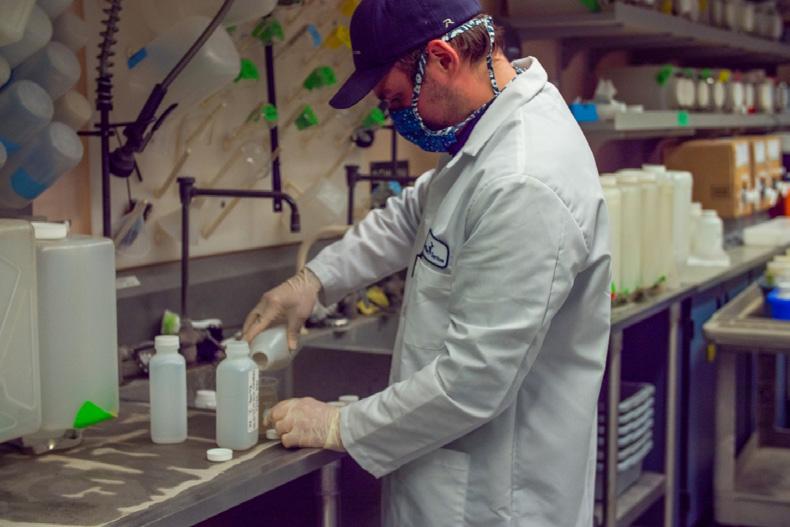
capitalize on new and emerging opportunities. It’s made more-robust by engaging with staff and external stakeholders, and by utilizing planning methods that can accommodate and address a variety of future operating scenarios (e.g., managing for uncertainty through “stress testing” a plan’s ability to hold up during extreme events, such as extended drought).
A strong plan reflects specific implementation steps that will move a utility from its current level of performance to achieving its vision. Preparation of a strategic business plan involves taking a longer-term view of utility goals and operations and establishing a clear vision and mission. The plan, through engagement with external stakeholders, should reflect key community values, needs, and interests.
When developed, the strategic business plan should drive and guide utility objectives, measurement efforts, investments, and operations. A strategic business plan can also help explain the utility’s conditions, goals, and plans to staff and stakeholders, stimulate change, and increase engagement and support for improvement efforts. After developing a strategic business plan, it’s important that the utility tracks its progress, provides clear accountability into its management framework, and revisits the plan on a regular basis.
Knowledge Management
Knowledge management is another cornerstone of effective utility management and is critical to ensuring reliable utility operations. It spans standard operating procedures, human resource management, and business systems and operating systems data integration and utilization to support dependable operations and continual improvement across the ten attributes.
By ensuring that processes are welldocumented through writing down “this is how
we do things” and regularly updating standard operating procedures and creating shared knowledge among various employee categories, a utility is able to respond effectively to the inevitable knowledge loss brought on by employee turnover or unexpected absences. An effective knowledge management system is flexible to the use of new and evolving technologies, and should be updated on an ongoing basis.
Automated “smart” systems and data integration/management capabilities are an increasingly important aspect of efficient and effective continual improvement management. These systems and capabilities are available across all areas of utility management and can substantially improve the ability of utilities to track performance in real time, identify variability, and manage performance more effectively and precisely.
Measurement
Measurement is critical to management improvement efforts associated with the ten attributes and is the backbone of successful continual improvement management and strategic business planning. A measurement system serves many vital purposes, including focusing attention on key issues, clarifying expectations, facilitating decision making, supporting learning and improving, establishing and maintaining accountability, and, most importantly, communicating effectively—both internally and externally. Always keep in mind the management adage: “If you can’t measure it, you can’t improve it.”
Successful measurement efforts should be:
S Carefully selected to a limited number of performance measures that are used to focus the organization on the achievement of its strategic business plan goals.
Continued on page 30
Florida Water Resources Journal • May 2024 29
S Viewed as a continuum, starting with basic internal tracking and moving to moresophisticated baselining and trend analysis as necessary, with development of key performance indicators and inclusion of externally oriented measures that address community sustainability interests.
S Informed by staff input and driven by and focused on answering questions critical to effective internal management and external stakeholder needs, including information needed to allow governing bodies to comfortably support large capital investments.
S Supported by a well-defined decision framework assuring results are evaluated, communicated, and addressed in a timely manner.
Continual Improvement Management
Continual improvement management is usually implemented through a complete, startto-finish management system, also referred to as a “plan-do-check-act” framework. Continual improvement plays a central role in effective utility management and is critical to making progress on the ten attributes. Continual improvement management includes:
S Conducting an honest and comprehensive self-assessment—informed through staff engagement—to identify management strengths, areas for improvement, priority needs, etc.
S Conducting frequent sessions among interested parties (stakeholders) to identify improvement opportunities
S Following up on improvement projects underway
S Establishing and implementing performance measures and specific internal targets associated with those measures
S Defining and implementing related operational requirements, practices, and procedures
S Defining supporting roles and responsibilities to derive clear accountability for conducting assessments and implementing performance improvements
S Implementing measurement activities, such as regular evaluation, through operational and procedural audits
S Responding to evaluations through the use of an explicit change management process
Continual improvement management is further supported by gap analysis, establishment of standard operating procedures, internal trend analysis and external benchmarking where appropriate, best practice review and adoption, and other continual improvement tools. It can be used as a framework to help utilities understand improvement opportunities and establish explicit service levels, guide investment and operational decisions, form the basis for ongoing measurement, and provide the ability to communicate clearly with customers and key stakeholders.
Where to Begin: A Self-Assessment Tool
There are many ways to improve utility performance and each utility is unique. Many utilities may choose to start small and make improvements on a step-by-step basis, perhaps by working on projects that will yield early successes; other utilities may choose to take on several improvement efforts simultaneously. Some may prefer to enhance their strengths, while others will prefer to focus on addressing areas for improvement. Each utility should determine for itself the most important issue to address, based on its own strategic objectives, priorities, and the needs of the community it serves.
A thorough assessment of current performance based on the ten attributes is a useful first step in identifying options for improvement. It also establishes a quantifiable baseline from which to measure progress. As conditions

change, future reassessments will reveal new opportunities and new priorities.
The self-assessment tool can help water and wastewater managers use the EUM attributes to evaluate their utility’s current performance against internal goals or specific needs and determine where to focus improvement efforts. While it can be completed initially by an individual manager, it’s more effective when used as a vehicle for conversation and consensus building among the utility’s management team and key staff. As appropriate, other stakeholders might be invited to participate in the assessment, including oversight bodies, community and watershed interests, and regulatory authorities.
The assessment has four steps:
1. Assess current conditions based on the attributes
2. Rank the importance of each attribute for the utility
3. Chart the results
4. Choose one or more attributes to focus on
A copy of the self-assessment worksheet is available in the downloadable document. Following completion of the self-assessment, a guide for taking action on the results is also included.
Step 1: Assess Current Level of Achievement
Assess current conditions by rating a utility’s systems and approaches and current level of achievement for each attribute using a 1 (high achievement) to 5 (low achievement) scale. Consider the degree to which the current management systems effectively support each of the attributes and their component parts, as well as all components of each attribute, and gauge the rating accordingly. Use these descriptions to guide the rating.
Each attribute has several components represented by the bullet points listed for each. The rating can either reflect the lowest level of achievement of all of the bullet points for that attribute or an average across all of the bullet points for that attribute. For whatever approach is chosen, make sure it’s consistent in this approach across all attributes, such as:
S Effective, systematic approach and implementation; consistently achieve goals
S Workable systems in place; mostly achieve goals
S Partial systems in place with moderate achievement, but could improve
S Occasionally address this when specific need arises
S No system for addressing this
Step 2: Rank Importance of Attributes
Rank the importance of each attribute of the utility, based on its vision, goals, and specific needs. The ranking should reflect the interests
Continued on page 32
30 May 2024 • Florida Water Resources Journal
Continued from page 29



Complete Visibility in Full Wastewater Tanks SediVision®️ technology delivers unprecedented high-resolution image mapping of full wastewater tanks. Eliminate probing. Know with accuracy, where and how much material is under dark water. (866) 982-6531 ©️2024 USST HOLDINGS, LLC ussubmergent.com sedivision.com
and considerations of all stakeholders (managers, staff, customers, regulators, elected officials, community and watershed interests, and others). Using the ten attributes, consider the long-term importance to the utility, rank the most important as attribute 1, the second most important 2, and so on; the least important attribute would be ranked 10. The ranking of each attribute’s importance may be influenced by current or expected challenges in that particular area, recent accomplishments in addressing these issues, or other factors. The ranking is likely to change over time as internal and external conditions change. The ten attributes are:
1. Product Quality
S Meets or exceeds regulatory and reliability requirements
S Operates consistent with customer, public health, economic, and ecological needs
2. Customer Satisfaction
S Provides reliable, responsive, and affordable services
S Receives timely customer feedback
S Is responsive to customer needs and emergencies
S Provides tailored customer service and outreach to a range of customer groups (e.g., residential, commercial, industrial, and newly emerging groups, such as high-strength waste producers or power companies)
3. Employee and Leadership Development
S Recruits, develops, and retains a competent, safety-focused workforce
S Is a collaborative organization dedicated to continual learning, improvement, and adaptation
S Implements procedures for institutional knowledge retention, workplace safety, and
continual learning (e.g., standard operating procedures)
S Invests in and provides opportunities for professional and leadership development
S Supports an integrated and well-coordinated senior leadership team
4. Operational Optimization
S Conducts ongoing performance improvements informed by performance monitoring
S Minimizes resource use and loss from day-today operations
S Is aware of and adopts in a timely manner operational and technology improvements, including operational technology and information technology
S Manages and utilizes data from automated and smart systems
5. Financial Viability
S Understands and plans for full life cycle cost of utility
S Effectively balances long-term debt, asset values, operations and maintenance expenditures, and operating revenues
S Sets predictable and adequate rates to support a utility’s current and future needs, taking into account affordability and the needs of disadvantaged households when setting rates
S Understands opportunities for diversifying revenue and raising capital
6. Infrastructure Strategy and Performance
S Understands the condition of and costs associated with critical infrastructure assets
S Maintains and enhances assets over the long term at the lowest possible life cycle cost and acceptable risk
S Coordinates repair efforts within the community to minimize disruptions
S Plans infrastructure investments consistent

with community needs, anticipated growth, system reliability goals, and a robust set of adaptation strategies
7. Enterprise Resiliency
S Works together with staff internally and coordinates with external partners to anticipate and avoid problems
S Actively establishes tolerance levels and effectively manages risks (including legal, regulatory, financial, environmental, safety, cybersecurity, knowledge loss, talent, and natural disasters).
S Plans for and actively manages to maintain business continuity
8. Community Sustainability
S Actively leads in promoting and organizing improvements to community and watershed health within a utility and with external community partners
S Actively leads in promoting welfare within the community for disadvantaged households
S Uses operations to enhance the natural environment
S Efficiently uses water and energy resources, promotes economic vitality, and engenders overall community improvement
S Maintains and enhances ecological and community sustainability, including pollution prevention and watershed and source water protection
9. Water Resource Sustainability
S Ensures water availability through longterm resource supply and demand analysis, conservation, “fit for purpose” water reuse, integrated water resource management, watershed management and protection, and public education initiatives
S Manages operations to provide for long-term aquifer and surface water sustainability and replenishment
S Understands and plans for future water resource variability (e.g., changing weather patterns, including extreme events, such as drought and flooding)
10. Stakeholder Understanding and Support
S Engenders understanding and support from oversight bodies, community and watershed interests, and regulatory bodies for service levels, rate structures, operating budgets, capital improvement programs, and risk management decisions
S Actively engages in partnerships and involves stakeholders in the decisions that will affect them
S Actively promotes an appreciation of the true value of water and water services, and water’s role in the social, economic, public, and environmental health of the community
Continued on page 34
Continued from page 30

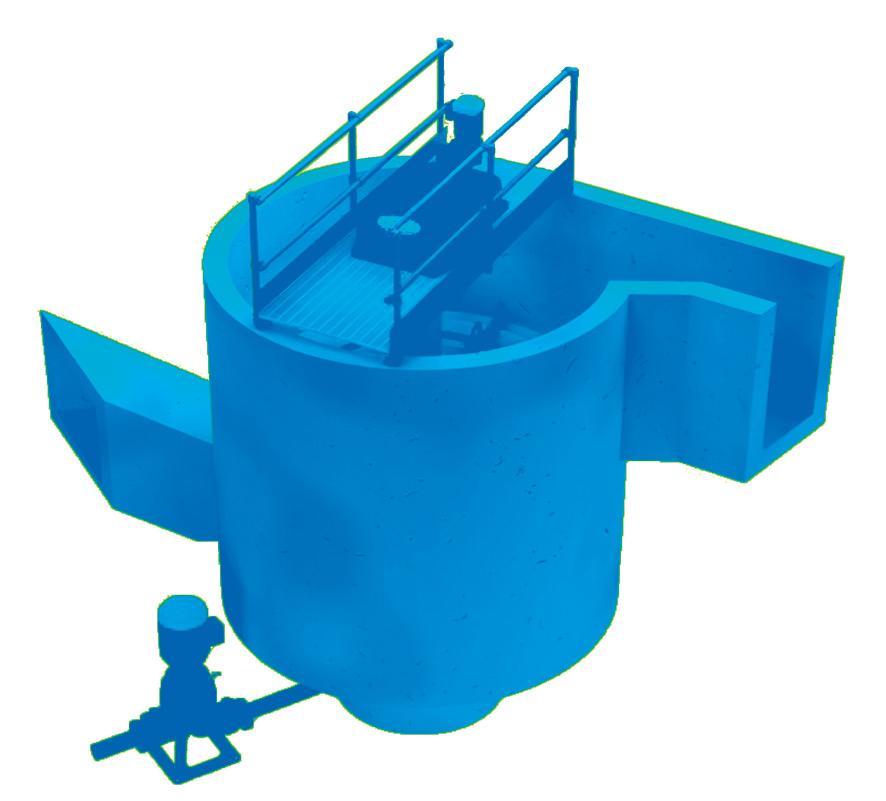
Florida Water Resources Journal • May 2024 33
Step 3: Graph Results
Graph each attribute based on the rating and ranking. A blank graph is provided in the downloadable document.
Step 4:
Choose Attributes to Focus On
The goal of EUM is to establish highachieving systems and approaches for each attribute. Ultimately, utilities should strive to improve performance for all attributes. Utility managers may wish to focus on one or a few attributes at a time, aiming to eventually ensure that all attributes have been addressed and improved upon over time.
The choice to embark on improvement in one or more areas is up to the judgment of utility managers, and may also involve consideration of resources (staff and financial), leadership support, and other competing activities. Applying strategic business planning, measurement, and other keys to management success is very important for improving each attribute over time.
Getting to Work
This section focuses on the specific steps that utilities are encouraged to go through to implement EUM, includes a description of each element of the EUM cycle, and explains how utilities can take the results of their self-assessment, identify and implement effective practices, measure progress in the priority attribute areas, and do this through an improvement plan.
The EUM self-assessment serves as a comprehensive starting point for utilities, and the EUM cycle reflects how a utility’s self-assessment results can build into a continual improvement management process. Continual improvement is one of the five keys to management success for EUM and it operates throughout and supports the entire EUM cycle.
The water sector is a rapidly evolving world, and utilities must stay abreast of new technologies, changes in the workforce, transformation of customer needs, and much more. To adapt to these shifts, an effective utility must continually assess its performance and priorities, update its strategic plan, and make adjustments where necessary.
Two other keys are reflected directly in the EUM cycle: strategic business planning and measurement, which are explained later.
The two remaining keys are also important to supporting all aspects of the EUM cycle: leadership and knowledge management. Leadership can exist at any level of a utility’s organizational structure, and can encourage and enable active participation in an EUM culture. Knowledge management supports the critical information and operating needs of each step of the EUM cycle. All five of the keys to management success are integral to EUM, and they work in tandem with the ten attributes to support successful utilities.
The EUM cycle is a self-reinforcing progression of assessment, planning, implementation, measurement, and adjustment over time. Each element of the cycle is described here.
Implementation of Effective Utility Management
Strategic Business Planning
Following completion of the self-assessment, utilities will now have a holistic picture of their current performance and priorities for the future relative to the ten attributes. Using these results as a starting point, a utility can begin to move through a strategic business planning process. Strategic business planning provides a framework for decision making and planning for the future. A strategic business plan could include, or be
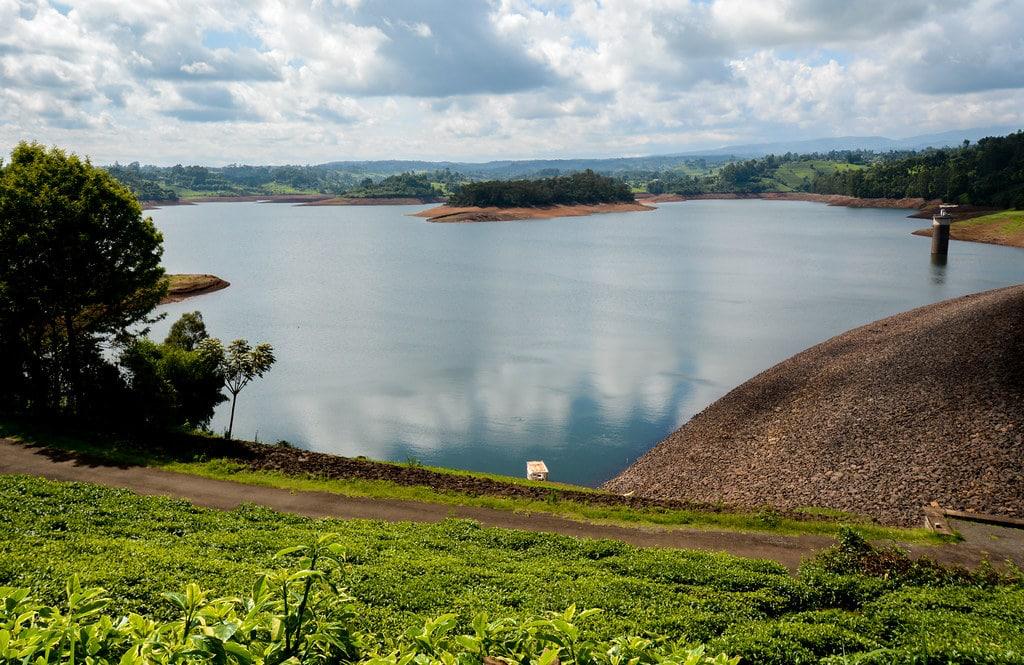
complemented by, an asset management plan and a financial plan for the utility.
Implementation of Effective Practices
After the utility has determined its priority attribute areas for improvement and established a vision, goals, and objectives for the future through its strategic business plan, it’s time to identify and implement effective practices linked to the attributes in support of these objectives. Effective practices can also be identified in many ways, through learning activities (e.g., conferences, training events, seminars, and webinars), interactions and benchmarking activities with other utilities, and resources created specifically to guide utilities in this area.
Measurement
To gauge performance and progress on the utility’s strategic plan and practice implementation, the next step in the cycle is to establish performance measures relative to key activities. The adage of “you can’t improve what you don’t measure” applies here. Measurement is a key focus of the primer, with approaches and example measures that utilities can implement addressed in greater depth later in this section.
Reflect and Adjust
At regular intervals, the utility should reflect on its progress toward the goals set forth in its strategic business plan and its improvement plan relative to the attributes, and determine if adjustments in course are needed, accounting for any changes in the utility’s operating context. Utilities can implement the cycle of EUM in a variety of ways. It can be integrated into processes already in place as a part of the utility’s operations and management, incorporated into a long-term planning process, or undertaken independently.
Measuring Performance
Measuring performance is one of the keys to utility management success. This section of the primer provides ideas about how to approach measurement and then offers measures for each attribute to help utilities understand their current status and measure their progress.
Approaching Measurement
There are two general approaches to performance measurement: internal and external benchmarking. The primer focuses on internal performance measurement, which centers on evaluating current internal utility performance status and trends. A robust measurement system is built around a combination of leading, lagging, and coincidental performance indicators. S Leading Indicators. These provide an indication of the future state of a performance parameter of keen interest to the utility; for example, an increase in near misses relative
34 May 2024 • Florida Water Resources Journal
Continued from page 32
to safety violations can foretell an increased risk of workplace injuries. Leading indicators provide a utility with the diagnostic ability to actively manage its desired performance outcomes and drive preventative actions.
S Lagging Indicators. These typically reflect a performance parameter of keen interest to a utility, such as compliance rate or water quality conditions, while at the same time providing performance information that can only be reacted to, making it sometimes challenging to actively adjust operations before a performance moves into an unacceptable range. These indicators, however, are critical to an overall measurement system as they typically focus on key performance outcomes that the utility, by necessity, must document (e.g., compliance with permit limits). Lagging indicators drive immediate, corrective actions that could have been prevented by using leading and coincidental indicators.
S Coincidental Indicators. These are a form of leading indicator that draws on the behavior of two or more parameters to signal the future state of a key performance parameter, such as phosphorus discharge concentration. These indicators are important to the active management of key performance outcomes, but also to conducting root cause analysis when key performance outcomes vary outside of desirable ranges. Coincidental indicators drive active process control actions.
Benchmarking
Benchmarking is the overt comparison of similar measures or processes across organizations to identify best practices, set improvement targets, and measure progress within, or sometimes across, sectors. A utility may decide to engage in benchmarking for its own internal purposes or in a coordinated fashion with others. While performance measures should be tailored to the specific needs of a utility, the following guidelines can help to identify useful measures and apply them effectively.
S Select measures that support the organization’s strategic objectives, mission, and vision, as well as the ten attributes.
S Select the right number, level, and type of measures for the organization. Consider how measures can be integrated as a cohesive group (e.g., start with a small set of measures across broad categories and increase the number and specificity over time as needed), and consider measures that can be used by different audiences within the organization.
S Measuring performance will not necessarily require additional staff, but will require resources. Allocate adequate resources to get the effort off to a good start, and fine tune over time to balance the level of measurement effort with the benefit to the organization.

S Develop clear, consistent definitions for each measure. Identify who is responsible for collecting the data, and how the data will be tracked and reported.
S Engage the organization at all levels in developing, tracking, and reporting measures, but also assign someone in the organization the role of champion to coordinate the effort.
S Set targets rationally, based on criteria such as customer expectations, improvement over previous years, industry performance, or other appropriate comparisons. Tie targets to improving performance in the ten attributes.
S Select and use measures in a positive way to improve decision making, clarify expectations, and focus attention, not just to monitor, report, and control.
S When selecting measures, consider how they relate to one another. Look for causeand-effect relationships; for example, how improvements in product quality could result in increased customer satisfaction.
S Develop an effective process to evaluate and respond to results. Identify how, when, and to whom to communicate results.
S Incorporate the “plan-do-check-act” cycle approach into evaluating both the specific measures and the system as a whole. Regularly review the performance measurement system for opportunities to improve. Remember to celebrate any measured and documented successes!
Attribute-Related Measures
The list that follows provides examples of targeted attribute-related measures. Taken as a whole, the measures provide a utility with a cohesive, approachable, and generally applicable starting place for gauging progress relative to the ten attributes. The list, for brevity, contains measure “headlines” for each attribute.
The measures can be tailored to a utility’s own
needs and unique, local circumstances. They are intended for internal use, even as certain measures (e.g., those noted as benchmarking performance indicators) can support benchmarking purposes. In these cases, the measures have been selected because they are relevant to the attributes, have been tested and are in use by utilities, are supported by reference information useful for implementation, and generally can act as a good starting point for attribute-related progress assessment.
The measures presented are both quantitative and qualitative. Most are quantitative, focus on outcomes typically of interest to utility managers (e.g., compliance rate), and include generally applicable example calculations. The qualitative “measures” encourage active assessment of the practices in place to support effective management in each attribute area. These are mostly “activity measures” and typically have a “yes/no” format. Like the attributes themselves, certain measures focus on core utility operations. Several measures reflect emerging utility issues, challenges, or opportunities that have received increasing attention from a growing number of utility managers; other measures may reflect broader interests that are worthy of consideration from a broader community perspective.
List of Attribute-Related Utility Measures
The list here includes a limited number of example measures that can be used to assess performance in each of the attribute areas.
Product Quality
S Regulatory compliance
S Service delivery
Customer Satisfaction
S Customer complaints
S Customer service delivery
Continued on page 36
Florida Water Resources Journal • May 2024 35
Employee and Leadership Development
S Employee retention and satisfaction
S Management of core competencies
S Workforce development
Operational Optimization
S Resource optimization
S Water management efficiency
Financial Viability
S Budget management effectiveness
S Financial procedure integrity
S Bond ratings
S Rate adequacy Infrastructure
Stability
S Asset inventory
S Asset (system) renewal/replacement
S Water distribution/collection system integrity
S Infrastructure planning and maintenance
Enterprise Resiliency
S Recordable incidents of injury or illnesses
S Insurance claims
S Risk assessment and response preparedness
S Ongoing operational resiliency
S Operational resiliency under emergency conditions
Community Sustainability
S Watershed-based infrastructure planning
S Green infrastructure
S Greenhouse gas emissions
S Service affordability
S Community economic development
Water Resource Sustainability
S Water supply adequacy
S Supply and demand management
S Watershed sustainability
Stakeholder Understanding and Support
S Stakeholder consultation
S Stakeholder satisfaction
S Internal benefits from stakeholder input
S Comparative rate rank
S Media/press coverage
S Partnering in the community
Creating an Improvement Plan
Once one or more attributes have been chosen, the next step is to develop and implement a plan for making the desired improvements. Improvement plans support the implementation of effective practices in the chosen attribute area(s). An effective improvement plan will:
Set Near- and Long-Term Goals
Set goals as part of the improvement plan to help define what is being worked toward. Near- and long-term goals for the utility should be linked to the strategic business plan, asset management plan, and financial plan.
Identify Effective Practices
Each attribute area for improvement will be supported by effective practices implemented by the utility. A substantial number of water sector resources exist that detail effective utility practices for each of the ten attributes.
Identify
Resources Available and Resources Needed
For each practice/activity to be implemented as part of the improvement plan, identify resources (financial, informational, staff, or other) that exist on-hand, and those that are needed, to support implementation.
Identify Challenges
For the overall improvement plan and for specific practices/activities to be implemented, identify key challenges that will need to be addressed.
Assign Roles and Responsibilities
For each improvement action, identify roles and responsibilities for bringing the implementation to completion.
Define a Timeline
Establish start date, milestones, and a completion target for each activity/improvement action.
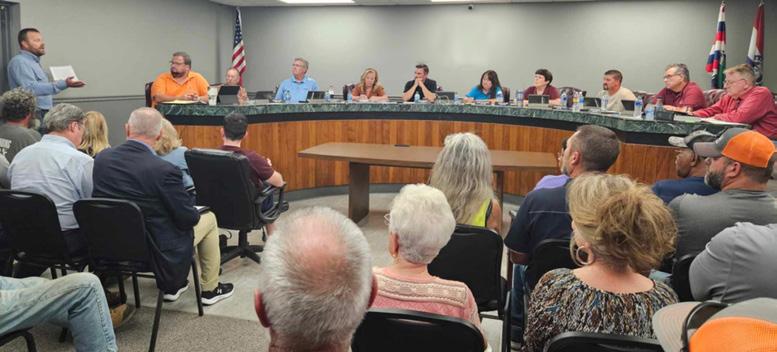
Establish Measures
Establish at least one measure (or maybe more) of performance for items to be implemented under the improvement plan.
Utility Management Resources
Resources to Support Effective Utility Management Implementation
The concept of EUM is designed as a broad framework to complement and enhance other prominent utility management initiatives currently in use. In addition to the primer, a wide range of resources exist across the water sector to support each step of the EUM cycle. The resources listed are examples of materials that can support each step of the cycle.
S Benchmarking Performance Indicators for Water and Wastewater (American Water Works Association [AWWA])
S Moving Toward Sustainability: Sustainable and Effective Practices for Creating Your Water Utility Roadmap (U.S. Environmental Protection Agency [EPA])
S The Partnership for Clean Water (AWWA)
S The Partnership for Safe Water (AWWA)
S Performance Benchmarking for Effectively Managed Water Utilities (Water Research Foundation)
S Planning for Sustainability: A Handbook for Water and Wastewater Utilities (EPA)
S Resource Guide to Effective Utility Management: Improving Performance and Addressing Key Management Priorities at Water Sector Utilities (EPA)
S The Water Resources Utility of the Future: A Blueprint for Action (National Association of Clean Water Agencies, Water Environment and Reuse Foundation, and Water Environment Federation)
Resource Toolbox
As a companion resource to the primer, the collaborating organizations developed an online resource toolbox, which offers additional information and guidance on effective utility management. The toolbox provides a compilation of resources from the collaborating organizations designed to help the water and wastewater utility community further improve the management of its infrastructure. The toolbox is organized according to the ten attributes of effectively managed water sector utilities and five keys to management success, providing a set of resources relevant to each attribute and key. The toolbox also includes information on where to find these resources.
The toolbox is located at www.WaterEUM. org. To download the full primer, go to www. epa.gov. S
36 May 2024 • Florida Water Resources Journal
Continued from page 35

Become a Servant Leader: Engage With an Organization—You Won’t Regret It!
 FSuzanne Mechler President, FWEA
FSuzanne Mechler President, FWEA
or my last article as FWEA president I want to highlight the great work from the last year, but also encourage
everyone to engage in an organization. It is incredibly important, and everyone can find a niche and a value proposition. We need all your voices to continue to move this industry forward.
This has been an amazing year. I first want to thank the incredible team members that make up the FWEA board, but most specifically, Sondra Lee, who has continued to be my mentor in this organization (even during retirement and on a sailboat!), as
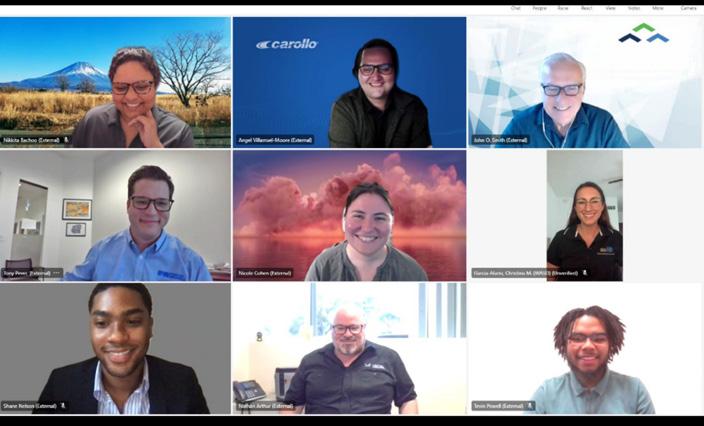

well as Joe Paterniti, who has caught every ball that I have dropped along the way. He will be a great president for the organization, and I look forward to supporting him in that role.
With a focus on elevating this industry, I will highlight here some of the successes we’ve had. With the Florida Water Resources Conference (FWRC) early this year, I am able to include some pictures of the events.
Telling Your Water Story: Everyone’s Story Speaks to Someone
We have started putting out the Water Stories from last year’s FWRC and we had an amazing time getting over 40 additional water stories this year at the conference. Keep an eye out on LinkedIn for your water story.

38 May 2024 • Florida Water Resources Journal
FWEA FOCUS
Getting our video production team set up for a Water Stories interview.
Polk County Utilities Bio-Wizards lead members of the Central Florida Chapter in the pipe cutting contest to highlight the Operations Challenge.
The second year of the FWEA Internship Program hit its stride connecting students to utilities and consultants, providing a needed conduit. Thanks to the entire Student and Young Professionals Committee. (photo: Olga Mikhalchishina)
This initiative is very important to me as we can share our voices—the path we took to get to this spot and what makes us passionate about what we do—with a goal of moving our “behind the scenes” work to the forefront. Our audience is each other, the public, the community, and most importantly, the next generation of our workforce.
Providing Value Through Technical Seminars and Networking
With 65 events in 10 months, FWEA volunteers created 30 technical sessions, ranging from full-day seminars to multiweek virtual series.
The Southwest Expo, Biosolids Seminar, and Wastewater Process Seminar have consistently been incredibly successful, and they proved themselves again this year by breaking attendance records.
There have been 20 networking events, such as the clay shoots and the Don Maurer putting tournament. This work not only
connects the people of our industry, but also provides for key scholarship opportunities. In combination, all of these events have reached 4,000 industry professionals and provided more than $50,000 in scholarships.
Setting Ourselves Up for Bigger and Better Things
I would like to highlight some other people and programs from the last year:
S Great collaboration with the FWEA Utility Council (UC). I would like to honor and thank Jeffrey Greenwell, P.E., with Hillsborough County, for his service as his two-year term as president ends. Jeff has been a collaborative partner, as well as a mentor. Thanks for sharing your passion.
S Shout out to the Public Communications and Outreach Committee (PCOC) members and their annual video contest. This year, they opened the contest to middle schoolers for the first time. With 48 submissions this year, our team has done a tremendous job!
S The members of the Student and Young Professionals (S&YP) Committee not only have developed successful events and programs, such as the Internship Program, YP Workshop, and the Student Design Competition, but they have also set themselves up with a leadership organizational chart and standard operating procedures.
“There is no real ending; it’s just the place where you stop the story.”
- Frank Herbert
I am humbled to have led this organization. This group has become my extended family and I am constantly impressed by the kindness, commitment, and dedication of our members and volunteers. Moving this industry forward requires alignment, innovation, collaboration, and inclusion and you are in good hands with Joe. The real power of the organization comes from the passion of the volunteers—and any of you can be a part of this story! S

Florida Water Resources Journal • May 2024 39






Florida Water Resources Journal • May 2024 41
42 May 2024 • Florida Water Resources Journal
Why is a Water Operator Important?
Who are we?
We’re so glad you asked! We’re a diverse group of professionals focused on improving, testing, and providing clean water to everyone. Do you like chemistry, physics, engineering, or really care about clean water for all? Do you want a career that gets you outside and moving? Then learn more about the water workforce!

What do we do?
Scan the QR code to watch videos from the EPA to learn more about the scope of positions, possibilities, and more about the water effort.

The One AWWA Operator Scholarship offers water and wastewater operators funding for continuing education, certification, training, and conference attendance through AWWA’s Water Equation’s partnership with local AWWA Sections. Scholarships are available throughout the year and payable to the education institute.




Florida Water Resources Journal • May 2024 43
Want more information? Investing in the Water Workforce Water Equation Learn about the water operator career Apply for a water operator scholarship Learn about available materials
One AWWA Operator Scholarship:





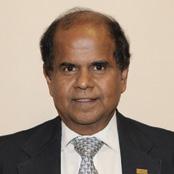




















44 May 2024 • Florida Water Resources Journal
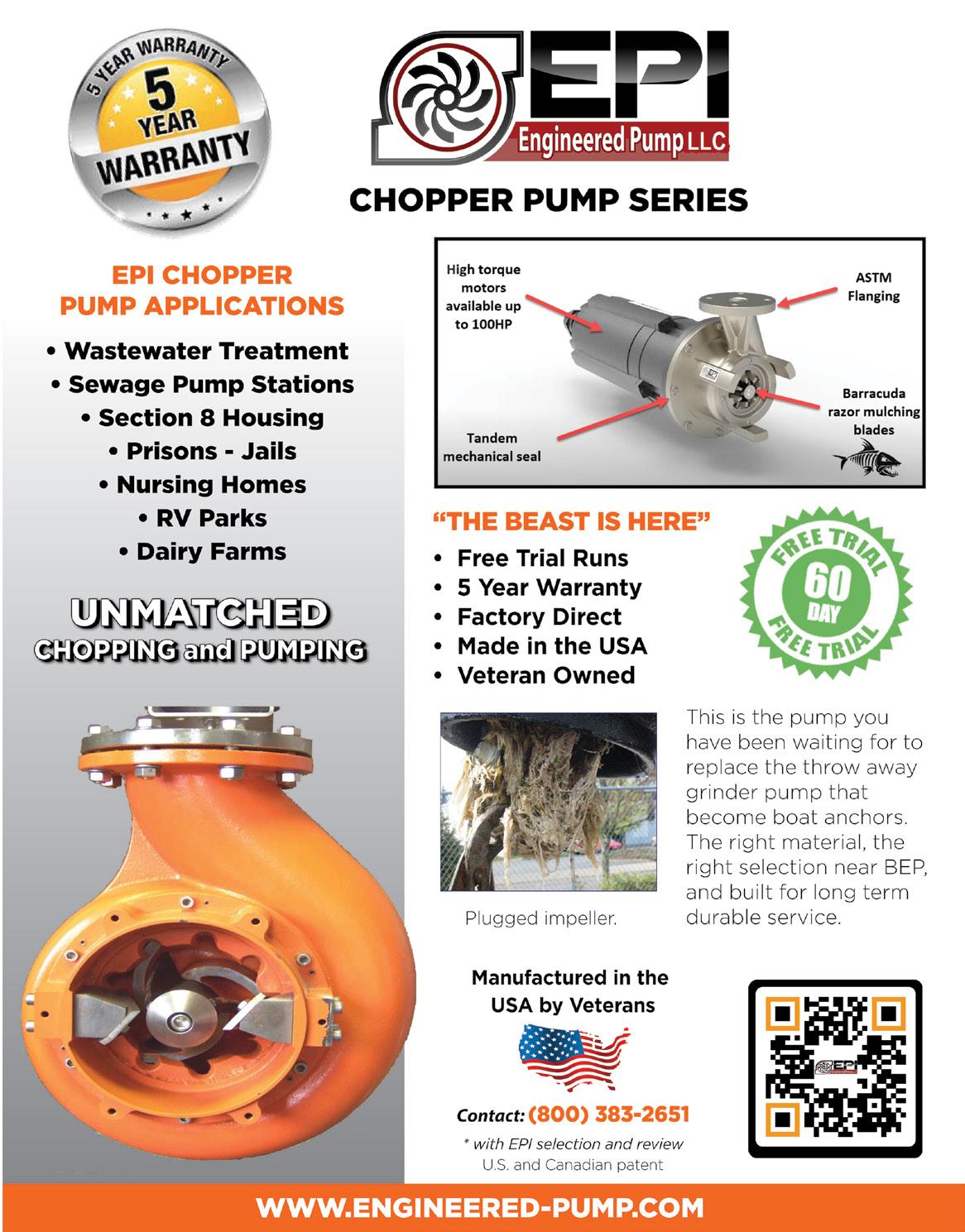
Florida Water Resources Journal • May 2024 45

AMWA Announces 2024 Management Recognition Awards Honoring Water Utility Achievements and Individual Contributions
For more than two decades the Association of Metropolitan Water Agencies (AMWA), headquartered in Washington, D.C., has provided drinking water utility recognition programs that honor extraordinary management and stellar workforce performance.
2024 Awards
The AMWA opened its annual awards program in January 2024 and invites all eligible AMWA member utilities to apply for the awards. The award submission period will close on June 28, 2024.
A distinguished panel of three peer judges will evaluate award applicants this summer and AMWA will present the awards at its 2024 Executive Management Conference, to be held October 20-23 in Miami. In addition, award winners will receive local, national, water industry, and public utility media recognition.
Utility Recognition
The association’s utility recognition program honors extraordinary management and stellar workforce performance through a progressive series of awards that any number of AMWA member utilities may win:
S Gold Award for Exceptional Utility Performance
S Platinum Award for Utility Excellence
S Sustainable Water Utility Management Award
Individual Recognition
The AMWA also honors individual accomplishments in the drinking water field through its President’s Award and Donald R. Boyd Award. Recipients of these awards are determined by the association’s Nominations Committee. Nominations are solicited in the summer by a bulletin from AMWA’s national office.
Award Categories
Gold Award for Exceptional Utility Performance
The AMWA Gold Award for Exceptional Utility Performance recognizes large public drinking water systems that exhibit high levels of performance in the following areas:
S Product quality
S Customer satisfaction
S Employee and leadership development
S Operational optimization
S Financial viability
S Community sustainability
S Enterprise resiliency
S Infrastructure strategy and performance
S Stakeholder understanding and support
S Water resource sustainability
These are the “Attributes of Effectively Managed Utilities” that were identified by a blue-ribbon panel of water and wastewater utility executives commissioned by the U.S. Environmental Protection Agency (EPA), AMWA, and other water-related associations.
Gold Award winners also show achievement in the “Keys to Management Success,” which are leadership, strategic business planning, knowledge management, measurement, and continual improvement management.
All AMWA member utilities that have never won a Gold Award are eligible to apply.
Platinum Award for Utility Excellence
Like the Gold Award for Exceptional Utility Performance, the criteria for the Platinum Award for Utility Excellence are also based on the “Attributes of Effective Utility Management” and the “Keys to Management Success.” Applicants are expected to show progress in implementing the attributes and keys, as well as a distinctive level of management expertise and expanded utility achievement.
Three years after winning a Gold Award, member utilities are eligible to apply for the Platinum Award for Utility Excellence. Past winners of AMWA’s Platinum Award for Sustained Competitiveness Achievement are also eligible to apply.
Sustainable Water Utility Management Award
The AMWA Sustainable Water Utility Management Award, introduced in 2014, recognizes member utilities that have made a commitment to sustainable management. While there are many opportunities available to water utilities to be managed more sustainably, there is no perfect path to get there. Each water system has its own water resource needs, infrastructure issues, financial position, political issues, energy costs, and other challenges.
This award views sustainability through a triple-bottom-line lens. This means winners will have achieved a balance of innovative and successful efforts in areas of economic, social, and environmental endeavors, such as responsible management of resources, protection of public health, meeting responsibilities to the community, and providing cost-effective services to ratepayers.
President’s Award
The AMWA President’s Award is given to individuals who have made outstanding contributions to the improvement of water supply management. Eligibility for this award is limited to individuals currently or formerly representing AMWA member agencies and it recognizes their efforts and dedication in the field of drinking water supply.
The award is presented to individuals who have made outstanding contributions to improving water supply management. Individuals nominated for this award must hold, or have held, a major position
46 May 2024 • Florida Water Resources Journal
with a water supply agency, while actively participating as a member of AMWA.
Donald R. Boyd Award
The Donald R. Boyd Award acknowledges extraordinary personal service in the drinking water field. General criteria may include valuable service that advances public understanding and awareness, water quality research, or more general contributions deserving of recognition. This award confers recognition to individuals who have made important contributions to the water industry, including as water system employees (regardless of AMWA membership), government officials, or private consultants.
The award commemorates Donald R. Boyd, one of AMWA’s founding members and its first president.
Environmental Justice and Equity Award
As the newest addition to AMWA’s award program last year, the independent Environmental Justice and Equity Award recognizes member utilities that commit
to advancing equity and justice in their communities.
The general criteria include:
S Using assessment and planning
S Equity in access and costs
S Civic involvement in decision making
S Integrative strategies
About the Association
An organization of the largest publicly owned drinking water systems in the United States, AMWA’s membership provides more than 156 million people—from Alaska to Puerto Rico—with safe drinking water.
It’s the only policy-making organization in the U.S. solely for metropolitan drinking water suppliers. The association was formed in 1981 by a group of general managers of metropolitan water systems who wanted to ensure that the issues of large publicly owned water suppliers would be represented in Washington, D.C. Member representatives to AMWA are the general managers and chief operating officers of these large water systems.
The association represents the interests of these water systems by working with Congress and federal agencies to ensure that federal laws and regulations protect public health and are cost-effective. In the realm of utility management, AMWA provides programs, publications, and services to help water suppliers be more effective, efficient, and successful.
Governed by a 22-member board of directors, AMWA represents all regions of the U.S. Its committees on utility management, regulations, legislation, sustainability, and security provide the expertise to achieve the goals of water suppliers, including sustainable operations, regulations based on sound science, and cost-effective laws that support the safety and security of drinking water.
Award Information
For questions on award eligibility or to request an application form, contact Antoinette Barber at 202.331.2820 or at barber@amwa.net. S

Florida Water Resources Journal • May 2024 47
What Do You Know About Water Distribution? Test Yourself
 Charlie Lee Martin Jr., Ph.D.
Charlie Lee Martin Jr., Ph.D.
1. An example of a linear stroke valve is a a. plug valve. b. butterfly valve.
c. gate valve. d. ball valve.
2. An example of a rotary valve is a a. plug valve.
b. diaphragm valve.
c. globe valve.
d. check valve.
3. The use of valves within the water distribution system may be to a. regulate flow. b. shut off flow.
c. turn on flow. d. all of the above.
4. Globe valves are efficient and therefore useful in
a. shutting or opening flow.
b. flow or pressure regulation.
c. increasing or reducing flow.
d. none of the above.
5. Globe valves are primarily used on pipes
a. 2 inches or smaller.
b. 12 inches or smaller.
c. 6 inches or smaller.
d. 4 inches or smaller.
6. Butterfly valves are primarily used for a. flow and pressure control.
b. isolation and automatic control.
c. pressure and isolation.
d. none of the above.
7. Air pockets within pipelines or distribution systems can
a. collect at high points within the distribution system.
b. stop the flow of water completely.
c. increase resistance up 15 percent.
d. all of the above.
8. Valves designed to remove air and or prevent vacuum conditions within the distribution system are called
a. gate valves.
b. plug valves.
c. air and vacuum valves.
d. globe valves
9. Valves on supply lines of elevated storage tanks or standpipes are called
a. altitude valves.
b. blowoff valves.
c. drain valves.
d. none of the above.
10. Valves that are used to reduce pressure surges within a system are called
a. blowoff valves.
b. altitude valves.
c. pressure relief valves.
d. none of the above.
Answers on page 58
References used for this quiz:
• Larry Mays, Water Distribution Systems Handbook, AWWA
• Water Distribution System Operation and Maintenance, CSUS 6th edition
• Water Distribution Operator Training Handbook, 3rd edition AWWA
Send Us Your Questions
Readers are welcome to submit questions or exercises on water or wastewater treatment plant operations for publication in Test Yourself. Send your question (with the answer) or your exercise (with the solution) by email to: charmartin@msn.com

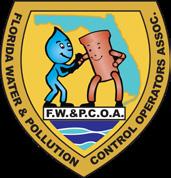
Shirley Reaves FWPCOA, Titusville
Work title and years of service. I’m the FWPCOA training coordinator and have worked for the organization for 26 years.
What does your job entail?
I take registrations for FWPCOA training classes, including 13 regions and the state classes. I’m responsible for all of the paperwork for the training office and post continuing education units for FWPCOA on the Florida Department of Environmental Protection website.
What education and training have you had?
I have a high school diploma and have taken some college classes. I finished the office technology program and internship for the Brevard Community College, now know as Florida Eastern State College. I was hired for a job with the college and a few years later became the training coordinator for FWPCOA. The FWPCOA training office moved out of the college to my home for one year and then into the location we are at now.
What do you like best about your job?
The FWPCOA people. They are all volunteers and are always there to help if needed! Working for FWPCOA has made me a better person overall. I also know more about water quality and the environment.
What do you like best about the industry?
Helping people advance in their jobs and protecting the environment.
What do you do when you’re not working?
I love to spend time with my family. I also enjoy camping, fishing, riding my bike, and just being outdoors. S
48 May 2024 • Florida Water Resources Journal
FWRJ READER PROFILE
DEFYING CONVENTIONAL.
Breakthrough Water Technology Of The Decade
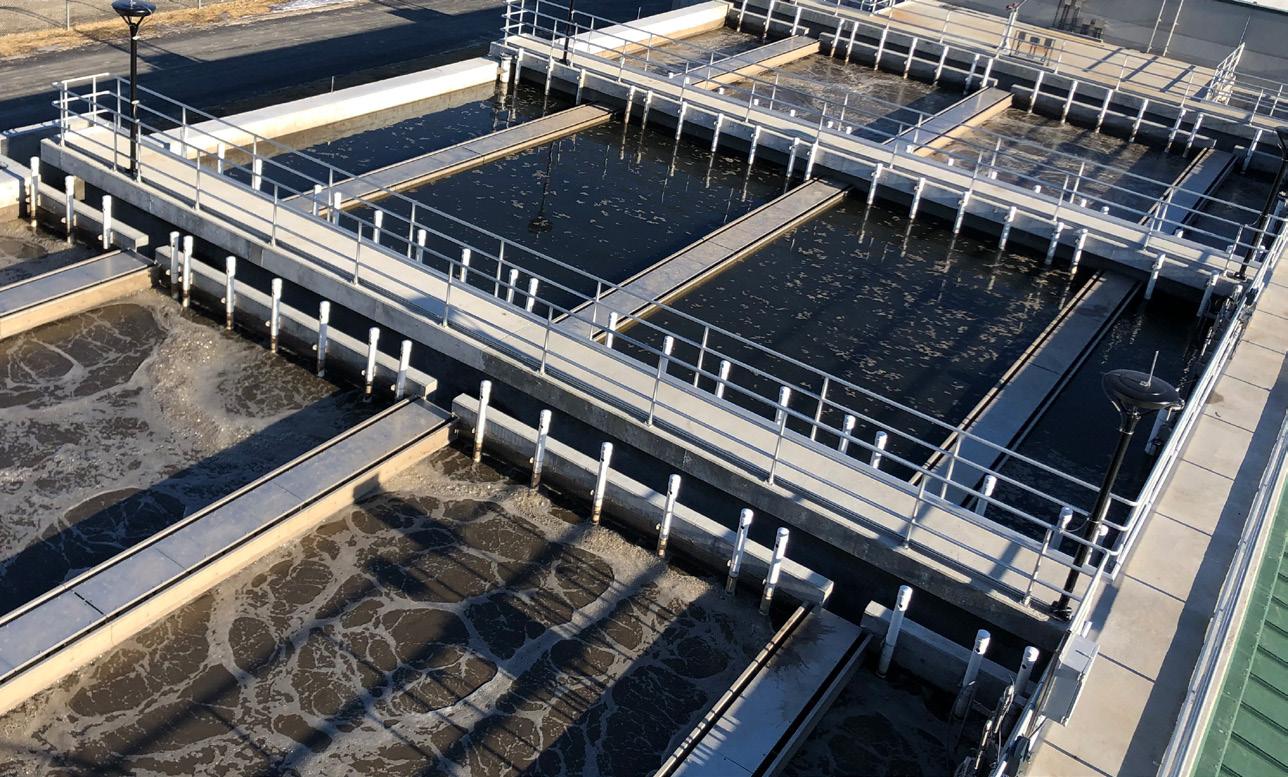

AEROBIC GRANULAR SLUDGE TECHNOLOGY
Following its introduction to North America in 2016, AquaNereda® Aerobic Granular Sludge Technology is quickly becoming the most sought-after wastewater treatment system in the U.S. and Canada with many plants in design and several plants currently under construction.
Consultants and end-users have realized the process and cost saving benefits associated with AquaNereda technology through on-site pilot testing, installation visits and technical seminars. The result is complete confidence in a progressive technology that ensures full plant compliance and peace of mind. Florida is no exception with plants currently pre-selected, under construction, or operational in 2024.
• Exceptional effluent without chemical addition
• Designed to meet or exceed nutrient removal demands
• Small footprint that easily retrofits into existing basins
Represented by:
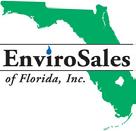
Chuck Hlavach Sarasota, FL C (941) 915-4861
chuck@envirosalesofflorida.com
• Reduced cost due to minimal civil site construction
• Low total cost of ownership
Greg Slohoda Orlando, FL C (239) 963-4467
greg@envirosalesofflorida.com
Jon Fernald St. Petersburg, FL C (813) 541-6127
jon@envirosalesofflorida.com
Pre-selected/Submittals
Aqua-Aerobic Systems, Inc. is the exclusive U.S. and Canada provider of Nereda® technology developed by Royal HaskoningDHV. www.AquaNereda.com | 815-654-2501
Coming Soon to the Sunshine State
Order/Under Construction
Regional Utilities 6 MGD avg. 12 MGD max Manatee County Southeast Water Reclamation Facility 8.5 MGD avg. / 11 MGD max Ft. Pierce Utilities Authority 12 MGD avg. / 24 MGD max
LET’S TALK SAFETY
This column addresses safety issues of interest to water and wastewater personnel, and will appear monthly in the magazine. The Journal is also interested in receiving any articles on the subject of safety that it can share with readers in the “Spotlight on Safety” column.
Identify, Treat, and Prevent Carpal Tunnel Syndrome
That tingling or numbness you’ve ignored for months in your hands and wrists (especially if you’ve been working at home at a makeshift, not-so-ergonomic work station) suddenly becomes a sharp, piercing lightning bolt that shoots through your wrists and up your arms. Is it just a passing cramp? More likely, you could have carpal tunnel syndrome (CTS), which is a painful, progressive condition that affects roughly one out of 20 people. Its cause is compression of a key nerve in the wrist.
Carpal tunnel results in the highest number of days lost in the corporate workplace of all other work-related injuries. About 50 percent of all carpal tunnel cases result in 31 days or more of work loss.
The Occupational Safety and Health Administration (OSHA) conducted a survey and reports that repetitive-strain injuries are the most costly and common occupational health problem in the United States. The condition affects hundreds of thousands of American workers and costs an estimated $20 billion per year in workers’ compensation.
On average, about 260,000 carpal tunnel
operations are performed each year, with 47 percent of these operations being work-related.
What is Carpal Tunnel Syndrome?
It occurs when the median nerve in the forearm gets squeezed as it passes through a narrow opening in the wrist called the carpal tunnel. Frequently, the pressure comes from the swelling of irritated tendons in the wrist area (due to overactivity) or an injury, such as a sprain or fracture. Just as likely, however, the disorder can result from a congenital predisposition—the carpal tunnel is simply too small for the size of the median nerve. Other contributing factors may include mechanical problems in the wrist joint and work stress.
What are the Symptoms?
The following symptoms typically start gradually and can be present in one or both hands:
S A tingling sensation or numbness in the thumb, palm, or fingers on one hand or on both hands

S Fingers that feel as if they’re swollen, even with no visible swelling
S Pain that affects one or both hands or wrists
S Difficulty moving the fingers
S Symptoms that first appear at night, then during the day
S A weak grasp or grip
Who is at Risk?
The affliction usually occurs only in adults, and women are three times more likely than men to develop it, perhaps because the carpal tunnel itself may be smaller in women than in men. The dominant hand is usually affected first and produces the most severe pain. The risk of developing CTS is not confined to people in a single industry or job, but the syndrome is especially common in those performing work involving repetitive motion. Little evidence supports extensive computer use as a risk factor for CTS, although computer use may cause a different form of hand pain. Other risk factors for CTS include:
S Pregnancy
S Wrist injury
S Family history of CTS

50 May 2024 • Florida Water Resources Journal
Let’s Talk Safety is available from AWWA; visit www.awwa.org or call 800.926.7337. Get 40 percent off the list price or 10 percent off the member price by using promo code SAFETY20. The code is good for the Let’s Talk Safety book, dual disc set, and book + CD set.
S Repetitive movements of the hand
S Repeated use of percussive or vibrating tools
S Health conditions such as arthritis and diabetes
S An underactive thyroid gland
How Can it be Prevented?
In the workplace, employees can do onthe-job conditioning, perform stretching exercises, take frequent rest breaks, and wear splints to keep wrists straight. A complete ergonomic evaluation of the workstation, tasks, and tools can promote changes that adapt the workplace conditions and job demands to alleviate the potential for CTS. Research, however, has not conclusively shown that these workplace changes prevent the occurrence of CTS.
What are the Treatments?
Once diagnosed, treatments for CTS
The Biden Administration and the U.S. Environmental Protection Agency (EPA) have finalized strict limits on certain so-called “forever chemicals” in drinking water that will require water utilities to reduce them to the lowest level that can be reliably measured. Officials say this will reduce exposure for 100 million people in the United States and help prevent thousands of illnesses, including cancers.
The rule is the first national drinking water limit on perfluoroalkyl and polyfluoroalkyl substances (PFAS), which are widespread and long lasting in the environment.
The PFAS are a broad family of chemical substances and the new rule sets strict limits on two common types—perfluorooctanoic acid (PFOA) and perfluorooctane sulfonate (PFOS)—at 4 parts per trillion. Three other types that include so-called GenX chemicals that are a major problem in North Carolina are limited to 10 parts per trillion. Water providers will have to test for PFAS and inform the public when levels are too high.
Health advocates praised EPA for not backing away from tough limits the agency proposed last year. Water utilities, however, have taken issue with the rule, saying treatment systems are expensive to install and that customers will end up paying more for their water.
Utility groups state the rules will cost tens of billions of dollars each and fall hardest on
should begin as early as possible. Initial treatment generally involves resting the affected hand and wrist for at least two weeks, avoiding activities that may worsen symptoms, and immobilizing the wrist in a splint to avoid further damage from twisting or bending. Other treatments include the following:
S Drugs. In special circumstances, various drugs can ease the pain and swelling associated with CTS.
S Exercise. Stretching and strengthening exercises under the supervision of a professional physical therapist can be helpful in people whose symptoms have abated.
S Alternative Therapies. Acupuncture and chiropractic care have benefited some patients, but their effectiveness remains unproved. Yoga, however, has been shown to reduce pain and improve grip strength.
S Surgery. Carpal tunnel release is one of the most common surgical procedures in the U.S. Surgery involves cutting the band of tissue around the wrist to reduce the
NEWS BEAT
small communities with fewer resources, and the industry expects many legal challenges will follow.
Water providers are entering a new era with significant additional health standards that EPA says will make tap water safer for millions of consumers. The agency has also proposed forcing water utilities to remove dangerous lead pipes.
Michael Regan, EPA administrator, says the rule is the most important action EPA has ever taken on PFAS. “The result is a comprehensive and life-changing rule, one that will improve the health and vitality of so many communities across the U.S.”
The PFAS chemicals are hazardous because they don’t degrade in the environment and are linked to several health issues, such as low birth weight and liver disease. The EPA estimates the rule will cost about $1.5 billion to implement each year, but doing so will prevent nearly 10,000 deaths over decades and significantly reduce serious illnesses.
The chemicals have been used in everyday products including nonstick pans, firefighting foam, and waterproof clothing. Although some of the most common types are phased out in the U.S., others remain. Water providers will now be forced to remove contamination put in the environment by other industries.
pressure on the median nerve. Surgery is typically done under local anesthesia and does not require an overnight hospital stay. Many patients require surgery on both wrists. Although symptoms may be relieved immediately after surgery, full recovery from carpal tunnel surgery can take months. Recovery typically includes physical therapy. Some patients may need to adjust job duties or even change jobs after recovery.
Resources
For more information go to:
S Centers for Disease Control and Prevention (CDC) website on ergonomics and musculoskeletal disorders at www.cdc.gov/ niosh/topics/ergonomics
S Mayo Clinic webpage on the topic at www. mayoclinic.com/health/carpal-tunnelsyndrome/DS00326
S OSHA website at www.osha.gov S
The Florida Public Service Commission (PSC) has proposed a rule for an alternative procedure to establish the rate base value when a water and/or wastewater utility acquires an existing water and/or wastewater system. Last year, the Florida Legislature passed Senate Bill 194, requiring the PSC to adopt rules to implement the new law.
To be eligible under the new law, the acquiring utility must provide water and/ or wastewater service to more than 10,000 customers or be permitted to produce 3 million gallons of drinking water per day, and the transaction must be at arm’s length. Utilities can seek PSC approval to establish a rate base value using the lower of the negotiated purchase price or the average of three appraisals conducted by qualified “licensed appraisers” chosen randomly from a list established by the PSC.
A utility’s petition must include a fiveyear projected rate impact on customers of the acquired system, as well as a three-year plan to address any deficiencies found by a licensed engineer. After receiving a complete petition, the PSC must approve, modify, or deny the request within eight months. The PSC will consider improvements to quality of service, regulatory compliance, rate reductions or rate stability, and cost efficiencies in determining whether the petition serves the public interest.
The PSC held a rule development workshop
Continued on page 53
Florida Water Resources Journal • May 2024 51
R

Florida Represented as 2024 WateReuse Award Winners Exemplifying Leadership and Innovation
The WateReuse Association has announced its latest slate of award winners, which represents communities across the United States that are elevating opportunities for water recycling.
Water recycling, or water reuse, is the sustainable treatment and use of water multiple times within communities. Water can be captured from homes and businesses, as well as from rain and saltwater, and can be cleaned with modern technologies for purposes that include industrial cooling, environmental restoration, irrigation, and drinking.
The award winners were recognized at the 2024 WateReuse Symposium, held in Denver in March, and exemplify the event’s theme, “Removing Barriers, Elevating Opportunities.” The awards include the WateReuse Awards for Excellence (multiple categories), President’s Award, and Service Awards.
WateReuse Awards for Excellence
The WateReuse Awards for Excellence recognize the people, projects, and partnerships that demonstrate exceptional leadership toward building more resilient communities through water reuse. Award recipients use water recycling in novel ways to solve water management challenges, advance policies that facilitate greater adoption of water recycling, and inspire others through their innovation and leadership.
Advocacy Achievement Award
This award recognizes individuals and organizations for significant achievements in advancing policy, legislation, or regulations that facilitate greater adoption, implementation, or acceptance of recycled water.
S Craig Miller, Western Municipal Water District, Cailfornia
S Daniel K. Nix, City of Wichita Falls, Texas
S John Rehring, Carollo Engineers
S WateReuse Texas State Section

Community Water Champions Award
This award recognizes the accomplishments of utilities and local government entities that ensure a safe, reliable, locally controlled water supply through the development of water recycling treatment facilities, infrastructure and/or other water reuse projects.
S City of Pompano Beach OASIS Reuse Utility, Florida
The OASIS (Our Alternative Supply Irrigation System) reuse water program has been preserving regional water supplies for 30 years. The program’s innovative approach to water management has helped to ensure the availability of safe and reliable water supplies. Pompano Beach residents have enjoyed the additional benefits of using nonpotable reclaimed water for irrigation: homeowners can reduce fertilizer use on their landscaping, and the program has reduced the amount of wastewater that would be discharged, protecting local waterways.
S Orange County Water District and Orange County Sanitation District, California
Excellence in Action Award
This award recognizes community leaders who demonstrate a commitment to water resiliency through the innovative use of recycled water for commercial operations, watershed restoration projects, irrigation, or other programs.
S Inland Empire Utilities Agency, California
Outreach and Education Award
This award recognizes significant success in advancing public acceptance of recycled water, including short-term campaigns, educational programs, and events.
S Eastern Municipal Water District, California
S

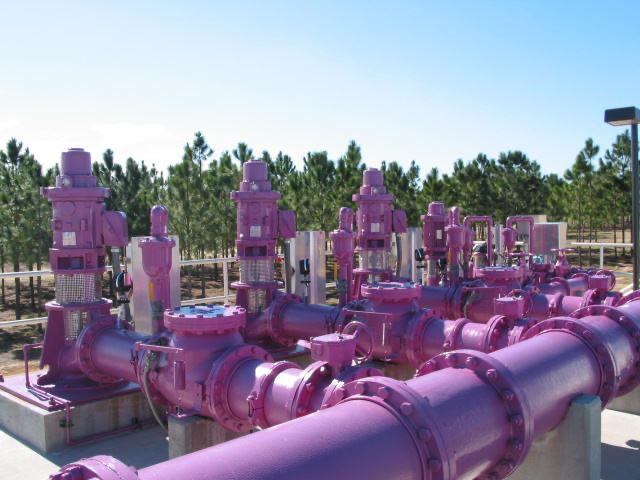
52 May 2024 • Florida Water Resources Journal
Transformational Innovation Award
This award recognizes technological advances, research breakthroughs, and innovative practices that advance the adoption, implementation, or public acceptance of recycled water.
S Loxahatchee River Environmental Control District, Florida
The Loxahatchee River Environmental Control District and its research partners oversaw a long-term research project in south Florida that showed the fate of nutrients in reclaimed water through treatment, storage, distribution, and application. This 12-year study revealed that significant reductions in nutrient concentrations occurred when reclaimed water used for landscape irrigation moved through a combination of traditional treatment and green infrastructure. Sequentially moving reclaimed water through the water reclamation facility, storage features, and transmission system provided a costeffective and energy-efficient option that achieved nutrient reductions similar to advanced wastewater treatment. Landscape irrigated with this reclaimed water for more than 20 years has not caused eutrophication of downstream surface waters.
S Palm Beach County Water Utilities Department, Florida, and CDM Smith Palm Beach County Water Utilities Department completed Phase 1 of the Green Cay Nature Center and Wetlands in 2004. Since then, the natural wetland treatment step has helped to clean 11 billion gallons of water, and the nature center has welcomed 1.3 million annual visitors. Now, the utility will begin construction of the Green Cay Phase 2 progressive design-build project. The project will help replenish local water resources, and could become one of the first projects permitted under Florida’s proposed potable reuse rules. The Green Cay Pilot Test demonstrated breakpoint chlorination as an effective solution to meet the Class III surface water quality standard for ammonia, and demonstrated virus monitoring and removal through an innovative field quantitative polymerase chain reaction (qPCR) method. Pioneering water reuse projects such as the Green Cay Phase 2 will mark an important step in defining sustainable water resources for the future.
Up and Comer Award
This award recognizes a professional with less than 10 years of experience in the recycled water industry for their leadership and commitment to pursuing water recycling as a career path.
S Susheera Pochiraju, Ph.D., Hazen and Sawyer
President’s Award
This award recognizes individuals who have significantly contributed to the advancement of water reuse through exceptional service and leadership. The award is given at the discretion of the WateReuse Association president.
S Michael R. Markus
Service Awards
The WateReuse Association recognized individuals for their service on its board of directors. Their leadership and vision have helped drive the national adoption of water reuse policies and programs.
S Pinar Balci, New York City Department of Environmental Protection
S B Narayanan, Carollo Engineers
About the WateReuse Association
The association is the nation’s only trade association solely dedicated to advancing laws, policy, funding, and public acceptance of recycled water. Its membership includes utilities that recycle water, businesses that support the development of recycled water projects, and consumers of recycled water. For more information, visit www.watereuse.org. S
NEWS BEAT
Continued from page 51
in November 2023 to obtain stakeholder comments. Water and wastewater industry representatives and the Office of Public Counsel, which represents utility customers, participated in the workshop. If no requests for hearing or comments are received, the rule will be filed for adoption with the Florida Department of State.
R
The White House and the U.S. Environmental Protection Agency (EPA) recently issued a warning to governors that cyberattacks are increasingly targeting water and wastewater systems throughout the United States, urging their state governments to safeguard critical water infrastructure against cyber threats.
In a letter sent to all U.S. governors, EPA and the White House invited them to a virtual meeting to highlight current federal and state efforts to promote cybersecurity practices in the water sector, discuss priority gaps in these efforts, and emphasize the need for states and water systems to take immediate action.
“The current administration has built our national security approach on the foundational integration of foreign and domestic policy, which means elevating our focus on cross-cutting challenges like cybersecurity,” says Jake Sullivan, national security adviser. “We’ve worked across government to implement significant cybersecurity standards in our nation’s critical infrastructure, including in the water
Continued on page 55

Florida Water Resources Journal • May 2024 53
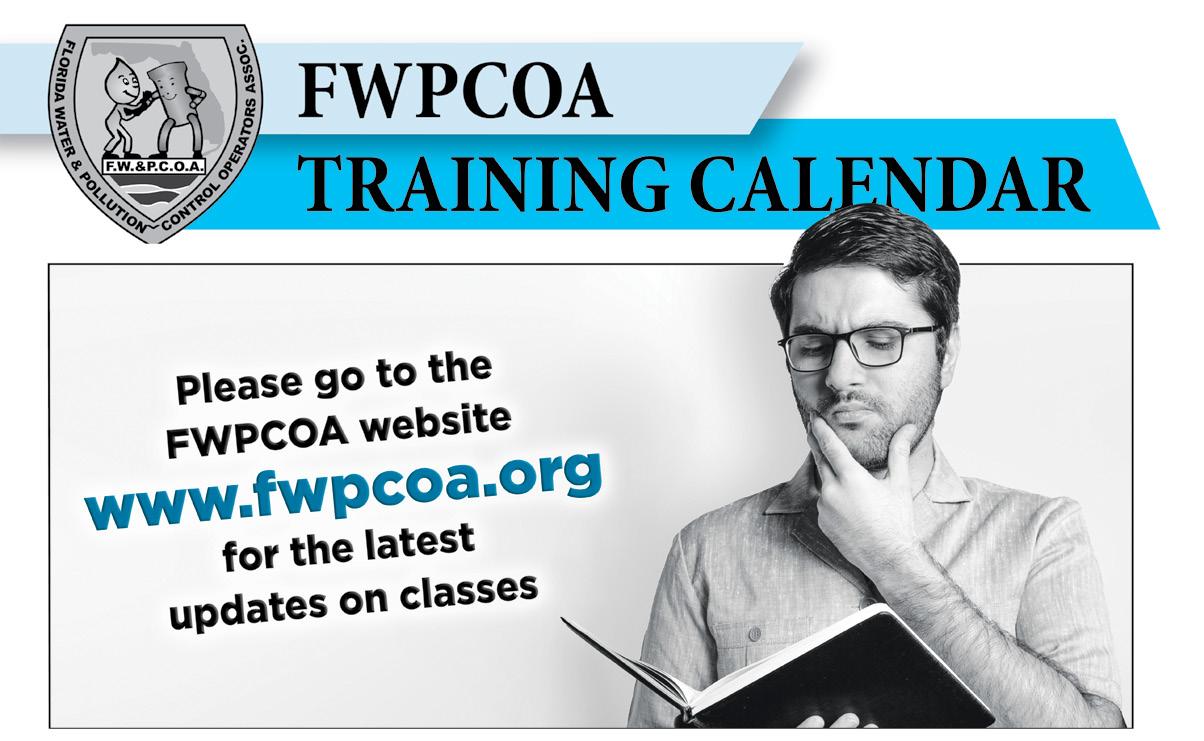

May 7-10 Water Distribution 3 Deltona $375.00 13-16 Wastewater Collection C Deltona 375.00 20-22 Backflow Repair Deltona $355.00 22 ..............Backflow recerts ................................................................................. Deltona ....................... $115.00 June 4-7 Water Distribution 2 Deltona $375.00 10-13 Backflow Tester Deltona $425.00 13 Backflow recerts Deltona $115.00 17-21 Reclaimed Water Field Site Inspector Deltona $425.00 17-21 Reclaimed Water Field Site Inspector Winter Garden $425.00 June 16-19 Wastewater Collection A Deltona $375.00 16-19 Water Distribution 1 Deltona $375.00 22-24 ..............Wastewater Collection B .................................................................. Deltona ....................... $375.00 22-24 ..............Backflow Repair ................................................................................. Gulfport ...................... $355.00 24 ..............Backflow recert .................................................................................. Gulfport ...................... $115.00
Continued from page 53
sector, as we remain vigilant to the risks and costs of cyber threats. We look forward to continuing our partnership with EPA to bolster the cybersecurity of America’s water and wastewater systems.”
RFlorida’s Coral Reef Restoration and Recovery Initiative has been awarded $9.5 million to bolster academic and private partnerships to safeguard the state’s Coral Reef, which extends over 350 nautical miles from the Dry Tortugas to the St. Lucie Inlet. This funding will enhance coral recovery, including propagation and outplanting capacities critical to the health and longevity of Florida’s Coral Reef.
“Florida’s Coral Reef protects southeast Florida against approaching storms and attracts visitors year-round,” said Gov. Ron DeSantis. “Safeguarding our coral reef is important both environmentally and economically and we will continue to support projects that keep this natural resource healthy.”
The initiative was established in Executive Order 23-06 to ensure the state develops infrastructure and capacity for coral propagation, and the technology, skilled workforce, and logistics needed to support long-term recovery and restoration. More than $11 million was included in the Focus on Florida’s Future budget proposal for Fiscal Year 2024–25 to continue this initiative.
“As we tackle environmental challenges, we understand that preparation and planning make all the difference,” said Shawn Hamilton, Florida Department of Environmental Protection secretary. “We are extremely thankful that this administration has prioritized environmental initiatives, because without them, we might be facing a different outcome for Florida’s Coral Reef.”
R
The Florida Department of Environmental Protection (FDEP) has announced the state’s acquisition of 16,200 acres of conservation lands within the Avalon, Etoniah/Cross Florida Greenway, Longleaf Pine Ecosystem, Apalachicola River, and Lake Wales Ridge Ecosystem Florida Forever projects.
This $26 million investment expands the Florida Wildlife Corridor, a designated network of connected lands that creates critical linkages for wildlife habitat, by 13,080 acres.
These acquisitions include: Avalon Florida Forever Project
Several conservation easements were completed within the Avalon Florida Forever Project, totaling approximately 11,700 acres in southern Jefferson County. These conservation easements provide long-term protection of the
NEWS BEAT
forestland and wetland systems characteristic of the Red Hills region of Florida.
They also help protect high-quality ecological communities that provide critical habitat for the region’s rare wildlife and plant species, including the Florida black bear, gopher tortoise, southern fox squirrel, yellow fringed orchid, and Florida Mountain Mint.
The acquisition of conservation easements totaling nearly 7,000 acres was approced on May 23, 2023, and these sales were finalized in late fall. Two other tracts were acquired by FDEP under delegation and closed late fall as well.
Etoniah/Cross Florida Greenway Florida Forever Project
Two purchases were made totaling 3,200 acres within the Etoniah/Cross Florida Greenway Florida Forever Project in Putnam County. One 800-acre parcel is contiguous with the Marjorie Harris Carr Cross Florida Greenway state recreation and conservation area and enhances wildlife corridor connectivity and increases forest management efficiency.
The second property is a 2,400-acre conservation easement located just west of Palatka. Acquiring less-than-fee protection furthers the goals to conserve and protect environmentally unique lands where native plants and wildlife thrive, and it protects water recharge areas.
The two parcels were acquired by FDEP under delegation and closed in October 2023.
Longleaf Pine Ecosystem Florida Forever Project
The FDEP also finalized acquisition of three parcels totaling approximately 500 acres within the Longleaf Pine Ecosystem Florida Forever Project in northeastern Marion County.
These three parcels are inholdings within the Ocala National Forest and contain one of the largest remaining tracts of old growth longleaf pine in Florida, dating back over 300 years.
The property will help protect adjacent water sources such as Lake Kerr and Salt Springs, a firstmagnitude spring that is important for wintering West Indian manatees. Preservation of these important parcels within the Florida Wildlife Corridor helps provide foraging and migration habitat for the Florida black bear and other migratory species.
This acquisition may also subsequently complete a segment of the Florida Natural Scenic Trail. It was approved on May 23, 2023, and the sale was finalized in October 2023.
Apalachicola River Florida Forever Project
The FDEP and The Nature Conservancy (TNC) worked together to acquire a critical parcel adjacent to Torreya State Park and TNC’s Apalachicola Bluffs and Ravines Preserve.
The property protects the fragile steephead ravine system that is internationally recognized as a biodiversity hotspot for conservation and protection. These steephead ravine systems are home to some of the most vulnerable and endangered species in the country, including the Florida Torreya, which is an extremely rare species of tree that grows along the high bluffs of the Apalachicola River. While the tract has been used as a tree farm for decades by previous owners, the protracted goal will be to restore it to its former diverse longleaf pine habitat.
Preservation of the property also protects the water quality of the Apalachicola River, which feeds the Apalachicola Bay. The 758-acre property was acquired by FDEP under delegation and the sale closed in November 2023.
Lake Wales Ridge Ecosystem Florida Forever Project
Through the Florida Forever program, FDEP acquired 212 lots under delegation within the Lake Wales Ridge Ecosystem Florida Forever Project, and the sale was finalized on Nov. 28, 2023. Managed by the Florida Fish and Wildlife Conservation Commission as part of the Holmes Avenue tract within the Lake Wales Ridge Wildlife Environmental Area, the small lots total 66 acres and play a significant role in consolidating a management boundary within the tract.
The property lies within the Florida Wildlife Corridor and exemplifies the concept of connecting landscapes for healthy populations of wildlife, including the Florida scrub jay, sand skink, scrub blazing star, and scrub plum.
Lake Wales Ridge, a unique geological feature that stretches south from near Orlando almost to Lake Okeechobee, is an ancient beach and dune system that has stood 300 feet above sea level for over 1 million years. Lake Wales Ridge contains plants and animals found nowhere else and preservation of this property protects one of the best remaining examples of ancient scrub and safeguards the highest concentration of endemic scrub plants and animals, many in jeopardy of extinction.
Florida Forever is the state’s conservation and recreation land acquisition program, a blueprint for conserving the state’s natural resources and renewing its commitment to preserving its resources and cultural heritage. The FDEP Division of State Lands is Florida’s lead agency for environmental management and stewardship.
Since 2019, the state has invested $1.25 billion for land acquisition, including $825 million specifically for the Florida Wildlife Corridor. This consistent funding has allowed FDEP to acquire over 220,000 acres during this time, approximately 90 percent of which are within the Florida Wildlife Corridor. S
Florida Water Resources Journal • May 2024 55
C L A S S I F I E D S
CLASSIFIED ADVERTISING RATES - Classified ads are $22 per line for a 60 character line (including spaces and punctuation), $60 minimum. The price includes publication in both the magazine and our Web site. Short positions wanted ads are run one time for no charge and are subject to editing. ads@fwrj.com
POSITIONS AVAILABLE
Water Reclamation Facility Operator III
This is skilled technical work, with supervisory responsibilities, in the inspection and operation of a water reclamation plant. The person in this position fills the role as the shift leader. Work involves responsibility for the safe and efficient operation of a water reclamation facility, routine adjustments to equipment and machinery operating controls, inspection of equipment inside and outside the plant site. An employee in this class exercises considerable independent judgment in adjusting machinery, equipment, and related control apparatus in accordance with established procedures and standards to produce a high-quality reclaimed water product. An employee in this class must be able to report to work outside of normally scheduled work hours at the discretion of management.
Required Qualifications:
♦ Possess a valid high school diploma or GED equivalency.
♦ Possess and maintain a valid Driver License.
♦ Possess and maintain a State of Florida Wastewater Operator “B” License.
♦ Must be able to perform shift work.
♦ Acknowledge this position is designated as Emergency Critical (EC) and if hired into the position, you must be immediately available to the department before, during, and after a declared emergency and/or disaster.
Salary: $31.02 - $41.30 hourly
http://www.stpete.org/jobs
The City of Zephyrhills
Looking for an exciting Career? The City of Zephyrhills has several career paths available in our Water and Wastewater Departments. The City of Zephyrhills offers a generous benefit package, including health, dental, vision, life insurance, paid time off, retirement benefits, tuition reimbursement, and more.
We are currently looking for talented individuals to fill the following positions:
Wastewater Treatment Plant Operators A, B, C, and trainees
Chief Wastewater Plant Operator
SCADA Specialist
Utilities Service Workers I, II, III
Meter Reader I
To view the complete job posting, salary ranges, and instructions for applying for these positions, please visit our website @ https://www.ci.zephyrhills.fl.us/Jobs.aspx.
Water Plant Operator
Peoples Water Service Company of Florida, Inc., located in southwest Escambia County Florida is a great place to build your career and enjoy the wonderful area. We currently have an opening for a Water Plant Operator. Applicants must have a valid Class C or higher Drinking Water license. Position requirements include knowledge of methods, tools and materials used in the controlling, servicing, and minor repairs of all water treatment facilities machinery and equipment. Requires a valid Florida Drivers License, and must pass a pre-employment drug screen test. Trainees who have passed the state exam and only need actual hours worked to obtain the license may be considered. Competitive pay and excellent benefits which include health, life, disability, dental, and 401K. Please send resume to Careers@PeoplesWaterService.com
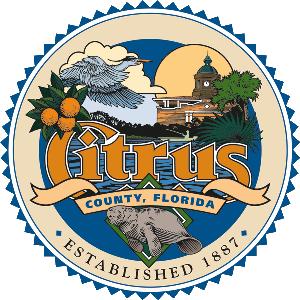
Citrus County BOCC - Water Resources Vacancies
Utility Planning & Engineering Division Director - Performs professional administrative and managerial work assisting the Water Resources Director in the implementation and successful delivery, startup, and commissioning of Capital Improvement Projects for Citrus County Utilities. Must meet the following minimum requirements: Bachelor’s degree in civil engineering; Six (6) years’ experience of a highly responsible nature in Civil Engineering dealing directly with design, construction, and operation of water, wastewater, and reclaimed utilities.; Registered Professional Engineer (P.E.) in the State of Florida.
Engineer I - Performs routine professional and technical engineering work reviewing and evaluating plans for the design of new water/ wastewater infrastructure and provides general professional engineering services for departmental capital improvement projects. Must be a Registered Professional Engineer (P.E.) in the State of Florida.
To learn more about the positions and to apply please visit https://www.governmentjobs.com/careers/citrusfl
Okeechobee Utility Authority – Positions Available
Assistant Executive Director
Waste Water Treatment Plant Assistant Supervisor
· Lift Station Technician – Electrical Knowledge Required
For information regarding job description, salary, benefits and to apply visit: www.ouafl.com or email: hrmanager@ouafl.com
56 May 2024 • Florida Water Resources Journal
Halff, an employee-owned, full-service engineering firm, has positions open for a Water and Wastewater Utilities Senior Project Manager, with the intention of transitioning to a Team Leader within 6-12 months. The positions are located in our Tavares and Orlando, FL locations. These positions require strong design experience and technical background working with local and state public utilities. The successful candidate should have experience managing multiple multi-disciplined project development teams, coordinating with clients and leading delivery of Water and Wastewater Infrastructure projects. In addition to project delivery responsibilities, candidates must demonstrate the ability to manage personnel, budgets, schedules, sub consultants and client interaction. The candidate will also assist the region’s business development activities. This position offers an excellent career development opportunity for someone looking to grow with Halff, with potential for not only business and personal growth while developing a Water/Wastewater team, but ownership in the firm.
Team Leader Qualfications:
· PE license in Florida
· Bachelor or Masters degree in Civil or Environmental Engineering
· 10+ years of experience including treatment facility and pipeline planning, design, and construction
· Strong communication skills, both written and verbal
· Experience managing design and plans production
· Familiarity with federal and state funding stream requirements is a plus
· Ability to manage multiple projects, clients, and lead technical support staff
· Ability to work in a team environment with multiple offices and various disciplines
· A positive attitude, be self-directed yet a team player, and have a focus on quality, integrity and success Submit resume’s and requests for information to Ginger Nilsson, gNilsson@halff.com

Utilities Program Coordinator
$61,859 - $95,744/yr.
Utilities Electrician
$61,234 - $86,163/yr.
Utilities Electrician Apprentice
$55.542 - $78,152/yr.
Utilities Treatment Plant Operator I or Trainee
$55,542 - $78,152/yr. or $50,378 - $70,885/yr.
Utilities System Trainee or Operators II & III
$41,446, $45,693 - $64,297, $50,378 - $70,885/yr. Apply Online At: http://pompanobeachfl.gov Open until filled.
City of St. Petersburg –
Plant Maintenance Technician (IRC62023) This is specialized and skilled technical work maintaining water and wastewater process equipment at the Cosme Water Plant in Northwest Hillsborough County and pumping stations in the City of St. Petersburg. Work involves inspecting, servicing, calibrating, and maintaining sophisticated electrical systems, telemetering devices, monitoring instruments and mechanical equipment, analyzing, diagnosing, and correcting mechanical and electrical/electronic equipment malfunctions. Close Date: 04-29-2024; $25.79 - $36.95; See details at www.stpete.org/jobs EEO-AA-Employer-VetDisabled-DFWP-
City of St. Petersburg –Plant Maintenance Technician II (IRC62024) This is advanced, specialized, and skilled technical work in the maintenance and repair of treatment and pumping instrumentation and equipment used in water and wastewater treatment plants and pumping stations, with an emphasis on advanced electronics and electrical systems, including equipment calibration from component level to system loop calibrations at the Cosme Water Plant in Northwest Hillsborough County, and two (2) pumping stations located in the City of St. Petersburg. Close Date: 04-29-2024; $26.56 - $38.79; See details at www.stpete.org/jobs EEO-AA-Employer-Vet-Disabled-DFWP-Vets’ Pref
City of Lake City
Wastewater Treatment Operator C needed. Must have high school diploma or GED; valid Florida Class C Wastewater Operator Certificate; valid Florida driver’s license, pass drug test and background check. Salary rage $34,398 - $56,854 DOE plus benefits, including State of Florida Retirement. To apply go to https://www.lcfla.com/jobs
Tampa Bay Water seeks Water Plant Operator
Tampa Bay Water is seeking a highly motivated and skilled Water Plant Operator to join our dynamic team. As a regional water supplier, we are dedicated to providing clean, safe, and reliable drinking water to the communities we serve. If you are passionate about water quality, possess the necessary technical skills, and thrive in a collaborative environment, we invite you to apply for this exciting opportunity at www.governmentjobs.com/careers/tampabaywater.
Account Manager
USP Technologies seeks an Account Manager to live in the Jacksonville area. Qualified applicants will be responsible for managing existing municipal business in North Florida, as well as becoming point person for business in GA and SC. Responsibilities will include application of various chemistries used to control sulfiderelated issues in collection systems and biosolids plants, as well as various industrial applications. Candidate should have 2-5 years working in municipal or industrial WWTP and be comfortable in an industrial environment. Ideal candidate will have BS in Chemistry, Engineering, Environmental or related technical field. For additional information, please send a copy of your resume and letter of interest to Abby Holder at abbie.holder@hach.com
Florida Water Resources Journal • May 2024 57
Halff Associates - Water and Wastewater Team Leader –Orlando, Fl & Tavares, Fl
Continued from page 48
Editorial Calendar
January ....... Wastewater Treatment
February Water Supply; Alternative Sources
March ........... �Energy Efficiency; Environmental Stewardship
April ............. Conservation and Reuse
May .............. Operations and Utilities Management
June ............. Biosolids Management and Bioenergy Production
July .............. Stormwater Management; Emerging Technologies
August ......... Disinfection; Water Quality
September... Emerging Issues; Water Resources Management
October ....... New Facilities, Expansions, and Upgrades
November.... Water Treatment
December .... Distribution and Collection
Technical articles are usually scheduled several months in advance and are due 60 days before the issue month (for example, January 1 for the March issue).
The closing date for display ad and directory card reservations, notices, announcements, upcoming events, and everything else including classified ads, is 30 days before the issue month (for example, September 1 for the October issue).
For further information on submittal requirements, guidelines for writers, advertising rates and conditions, and ad dimensions, as well as the most recent notices, announcements, and classified advertisements, go to www.fwrj.com or call 352-241-6006.
1. C) gate valve.
An example of a linear stroke valve is a gate valve.
2. A) plug valve. An example of a rotary valve is a plug valve.
3. D) all of the above. The use of valves within the water distribution system may regulate, shut off, or turn on flow.
4. B) flow or pressure regulation. Globe valves are efficient and therefore useful in flow or pressure regulation.
5. D) 4 inches or smaller. Globe valves are primarily used on pipes 4 inches or smaller.
6. B) isolation and flow control Butterfly valves are primarily used for isolation and flow control.
7. D) all of the above. Air pockets within pipelines or distribution systems can collect at high points within the distribution system, stop the flow of water completely, and increase resistance up 15 percent.
8. C) air and vacuum valves. Valves designed to remove air and or prevent vacuum conditions within the distribution system are called air and vacuum valves.
9. A) altitude valves.
Valves on supply lines of elevated storage tanks or standpipes are called altitude valves.
10. C) pressure relief valves. Valves that are used to reduce pressure surges within a system are
pressure relief valves.
58 May 2024 • Florida Water Resources Journal
called
Answer Key Display Advertiser Index Aqua Aerobics 49 ASP 25 Blue Planet Environmental Systems 59 CEU Challenge ..................................................................................................................... 17 Data Flow Systems .............................................................................................................. 39 Engineered Pump 45 FJ Nugent 21 Florida Water Resources Conference 11 FSAWWA ......................................................................................................................... 40-44 FWPCOA Trainiing Calendar .............................................................................................. 54 Gerber Pumps 9 Grundfos 27 Heyward 2 Hudson Pump & Equipment ............................................................................................... 37 Hydro Internatioinal ............................................................................................................... 5 Lakeside Equipment Corporation 7 PolyProcessing 53 Smith & Loveless 33 US Submergent .................................................................................................................... 29 Water Treatment & Control Technology ............................................................................ 23 Xylem 15 YSI Xylem 60
Test Yourself
Januar y 2016 Januar y 2016 SERVING FLORIDA’S WATER AND WASTEWATER INDUSTRY SINCE 1949

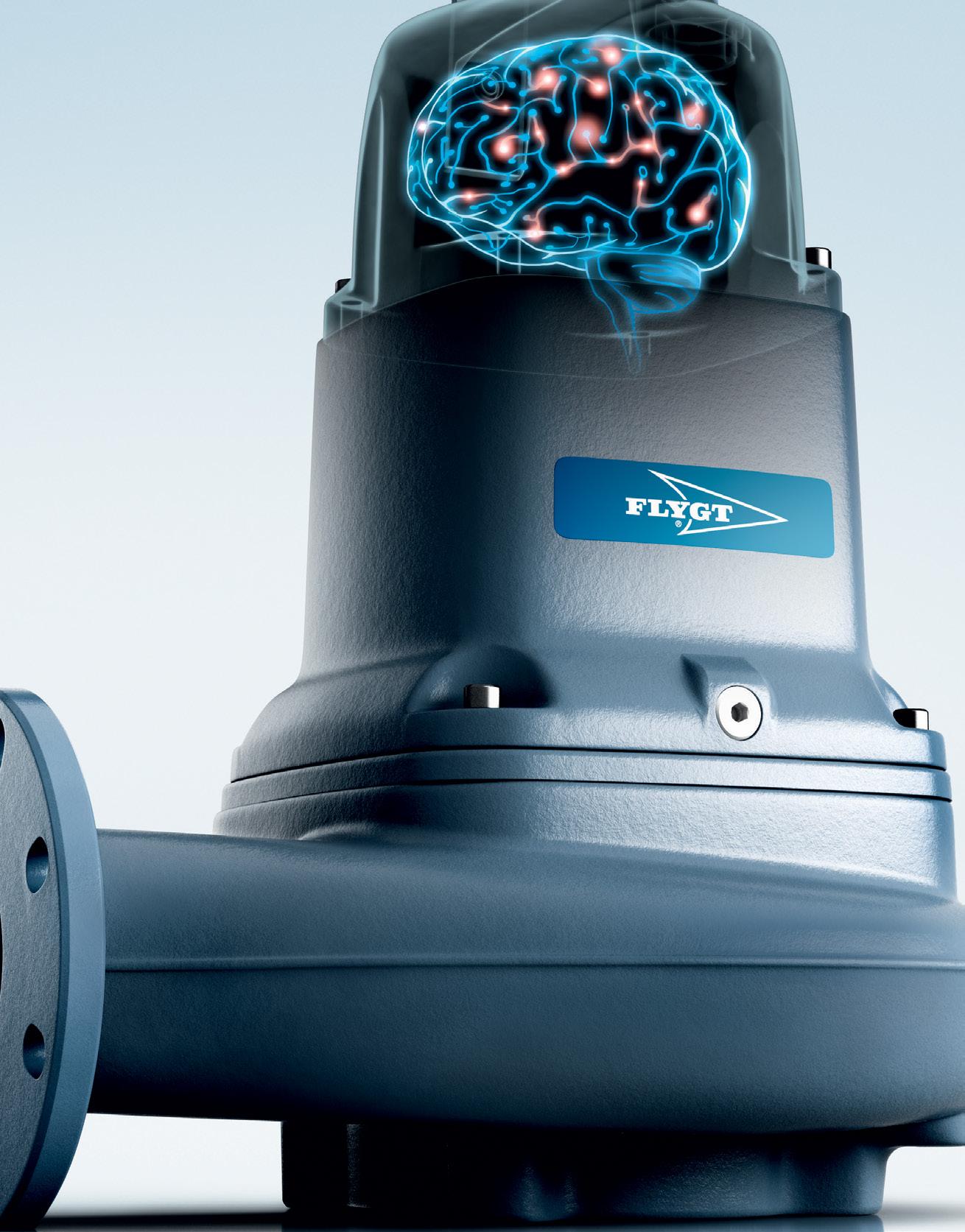
WORLD’S FIRST WASTEWATER PUMPING SYSTEM WITH INTEGRATED INTELLIGENCE This revolutionary system delivers optimal performance while reducing your total cost of ownership. I t also offers unparalleled flexibility and simplicity on a whole new level. You might even say it thinks for itself. We invite you to enter a new era in wastewater pumping with Flygt Concertor. One powerful solution. Unlimited possibilities. For more information contact your local Xylem product sales professional. Xylem Products 455 Harvest Time Dr. Sanford, FL 32771 407-880-2900 www.flygt.com INTEGRATED INTELLIGENCE CONCERTOR™ NEW PUMPING SYSTEM WITH

























 IAthena Tipaldos President, FWPCOA
IAthena Tipaldos President, FWPCOA




















 Marjorie G. Craig, P.E. Chair, FSAWWA
Marjorie G. Craig, P.E. Chair, FSAWWA













 Marjorie Craig (left), with Village of Tequesta, and Shea Dunifon, with JEA, at the HDR media training session.
Eddy the AWWA water drop on the way to the AWWA Water Matters! Fly-In in Washington, D.C.
FSAWWA members attending the AWWA Water Matters! Fly-In in Washington, D.C., getting ready to take a break to view the total solar eclipse on April 8.
Solar eclipse over Washington, D.C., on April 8. (photo: Marjorie Guillory Craig)
List of qualities admired in a leader by the Village of Tequesta Utilities Department.
Jessica Green (center), with Orange County Utilities, give awards to the raffle winners at the “Walk a Mile in Her Shoes” event.
19
Marjorie Craig (left), with Village of Tequesta, and Shea Dunifon, with JEA, at the HDR media training session.
Eddy the AWWA water drop on the way to the AWWA Water Matters! Fly-In in Washington, D.C.
FSAWWA members attending the AWWA Water Matters! Fly-In in Washington, D.C., getting ready to take a break to view the total solar eclipse on April 8.
Solar eclipse over Washington, D.C., on April 8. (photo: Marjorie Guillory Craig)
List of qualities admired in a leader by the Village of Tequesta Utilities Department.
Jessica Green (center), with Orange County Utilities, give awards to the raffle winners at the “Walk a Mile in Her Shoes” event.
19

































 FSuzanne Mechler President, FWEA
FSuzanne Mechler President, FWEA































 Charlie Lee Martin Jr., Ph.D.
Charlie Lee Martin Jr., Ph.D.

















